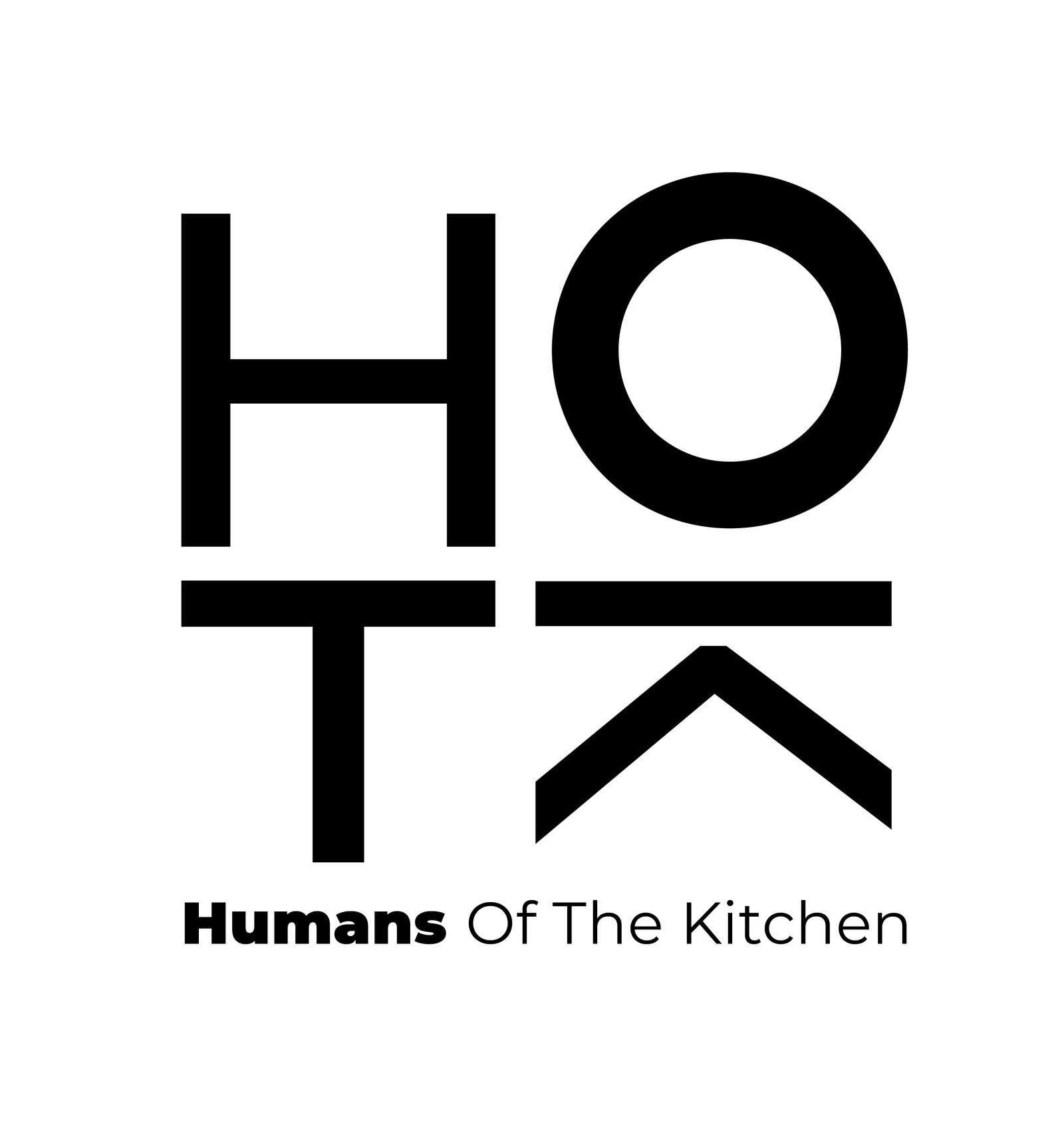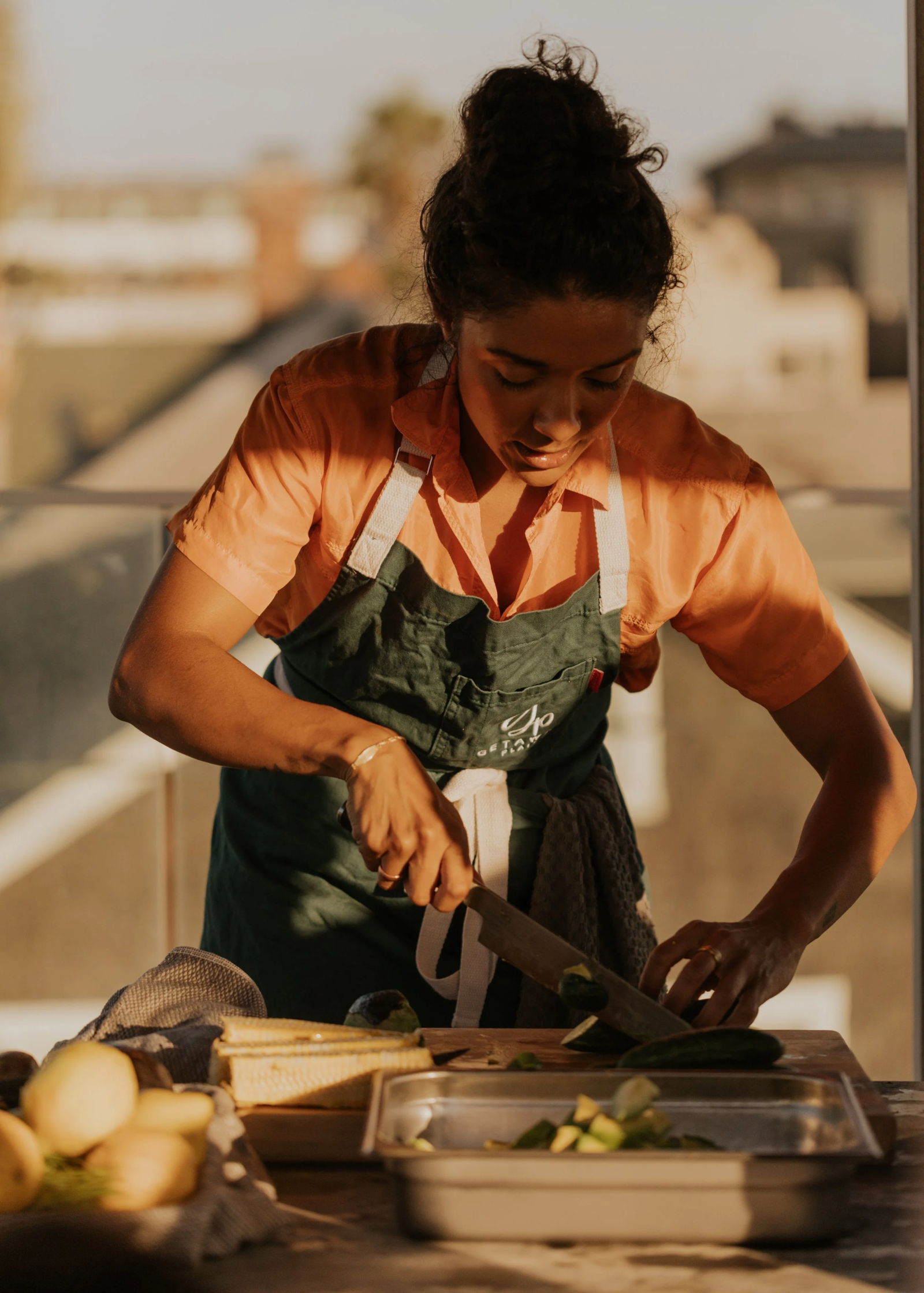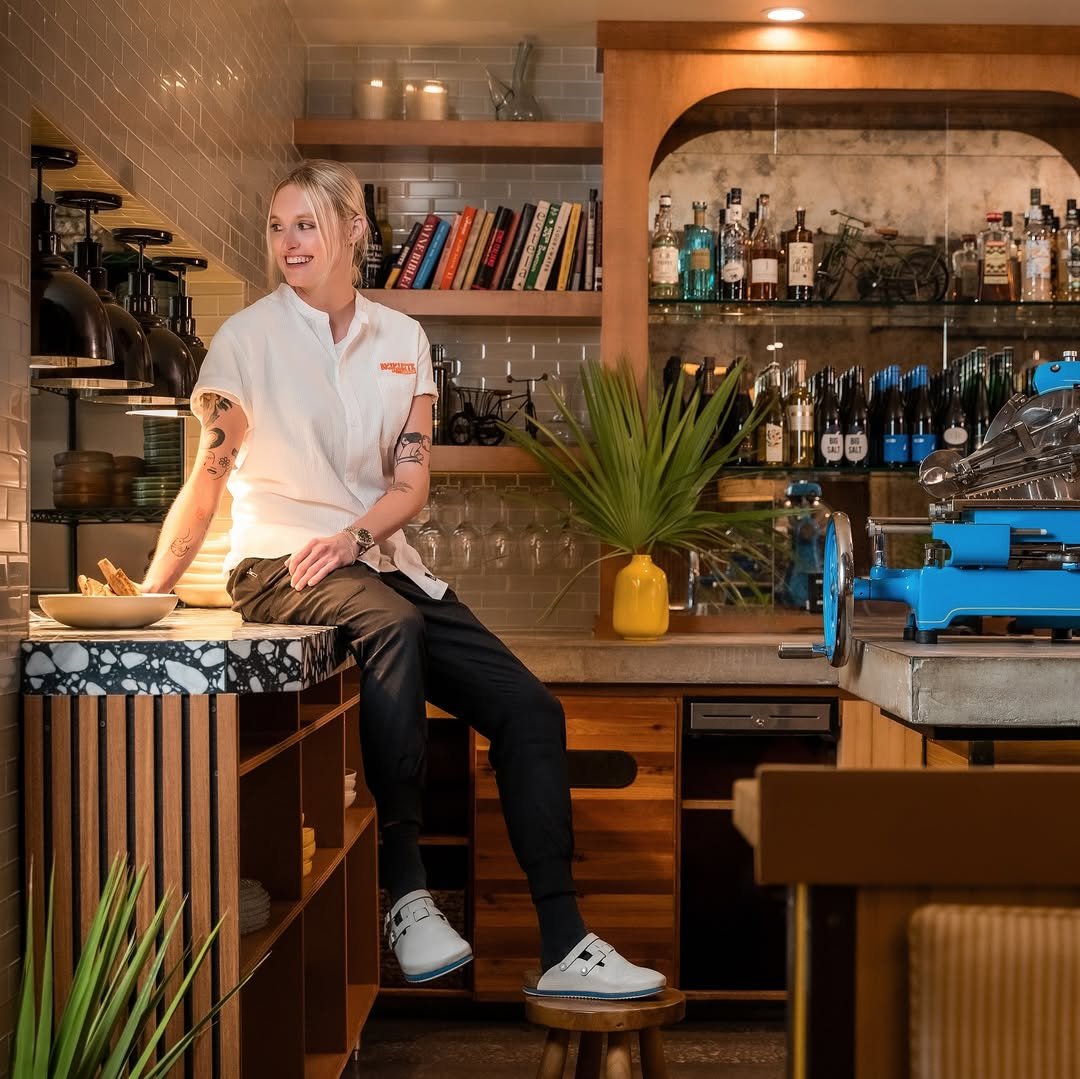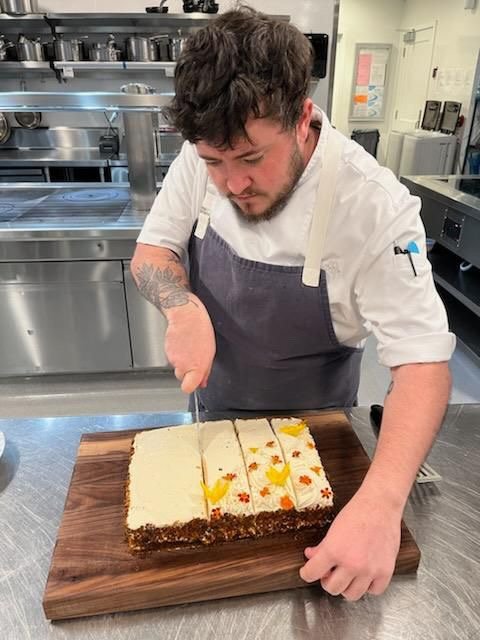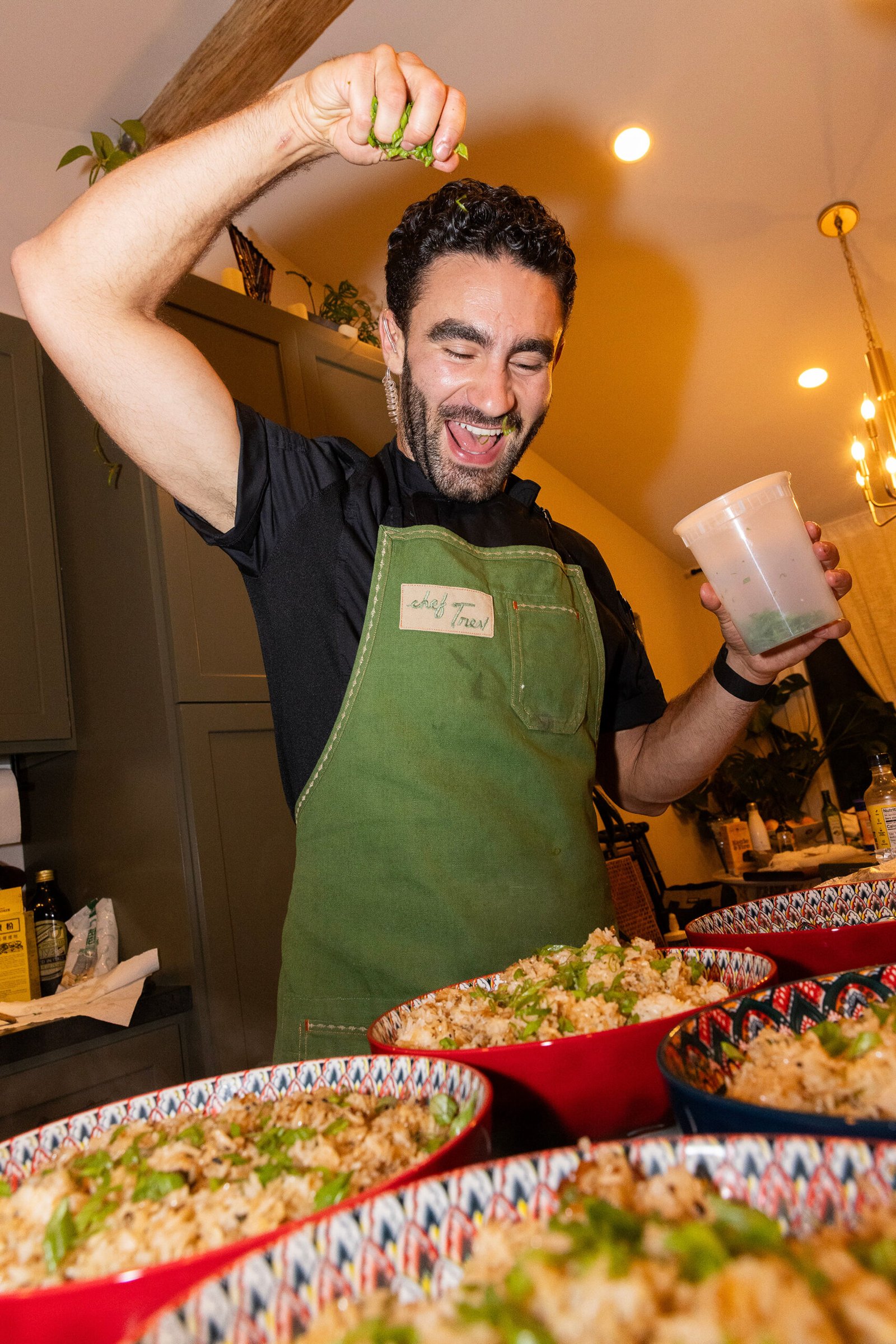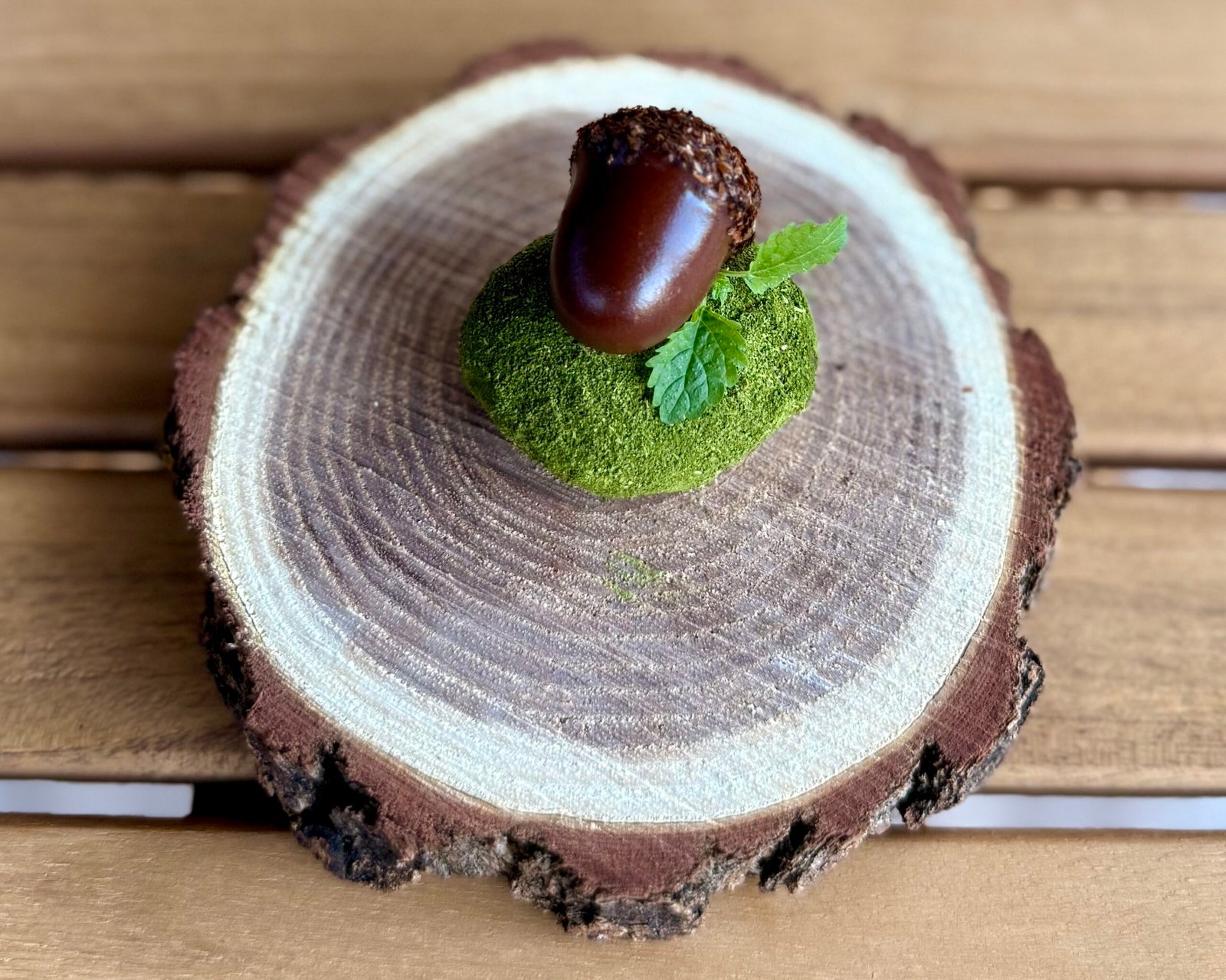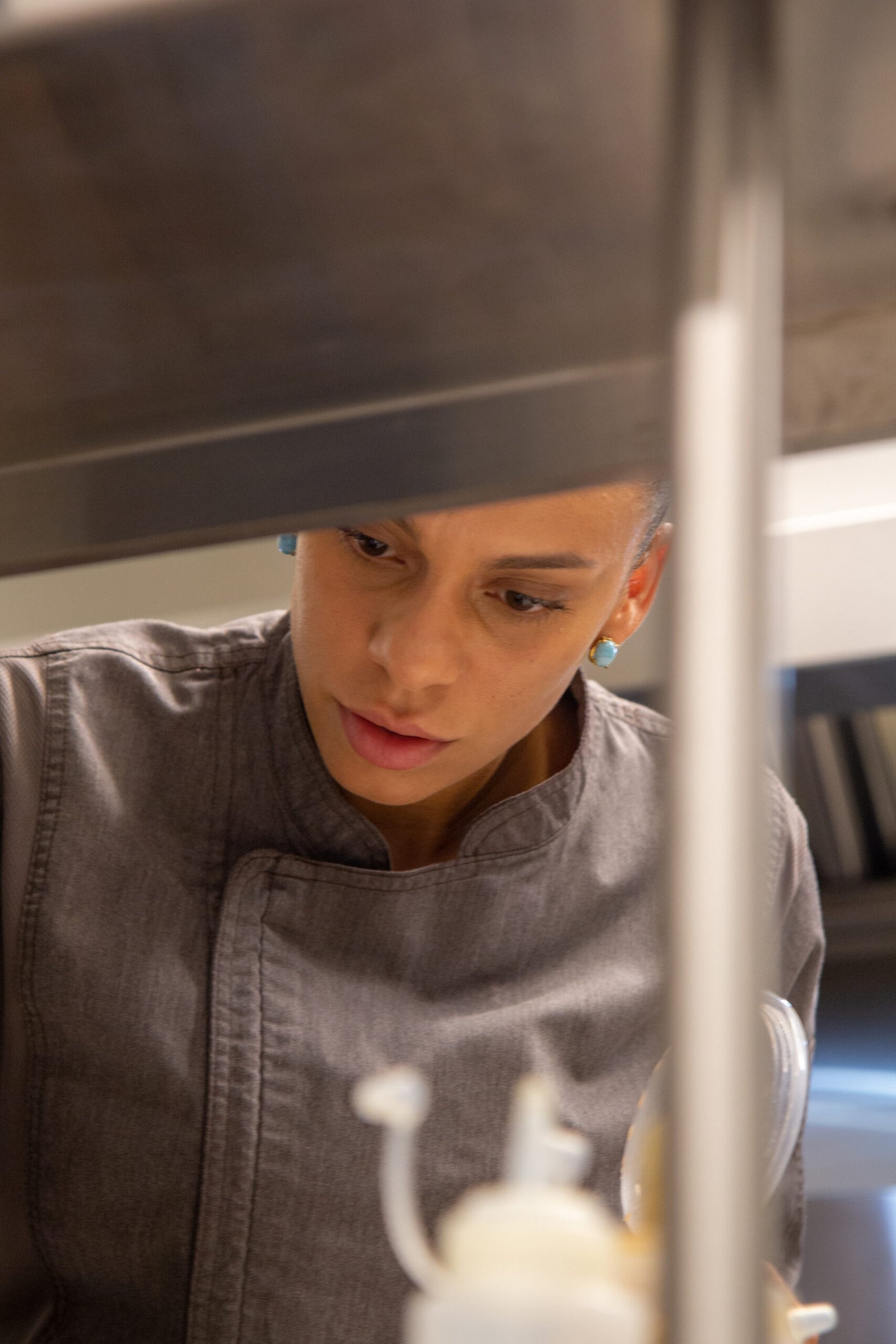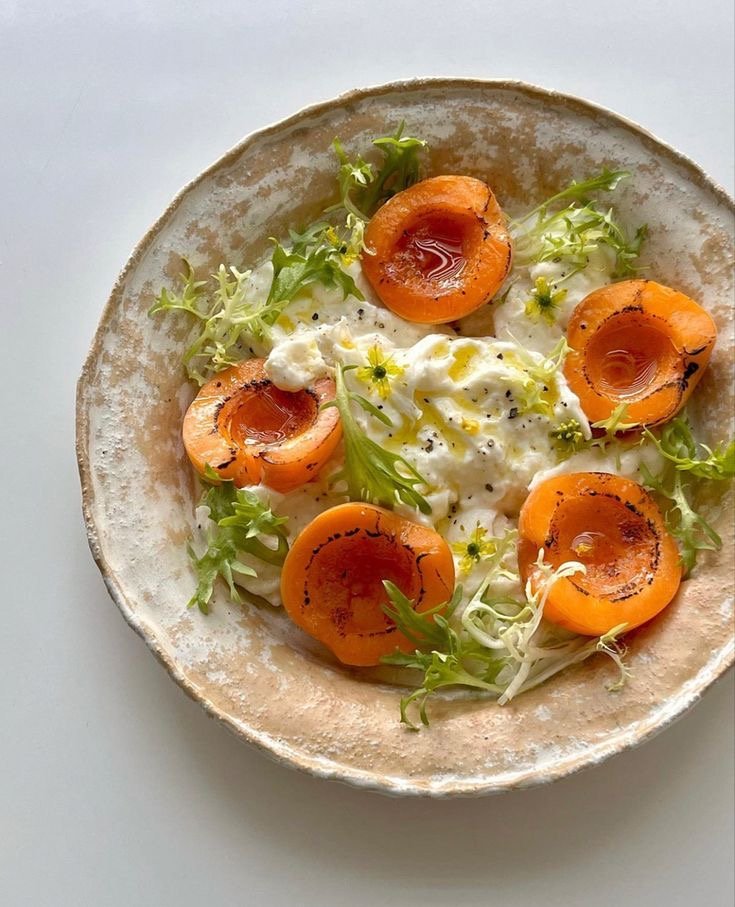A Craft With No Finish Line
Humans Of The Kitchen
Why endless learning is what keeps the fire alive.
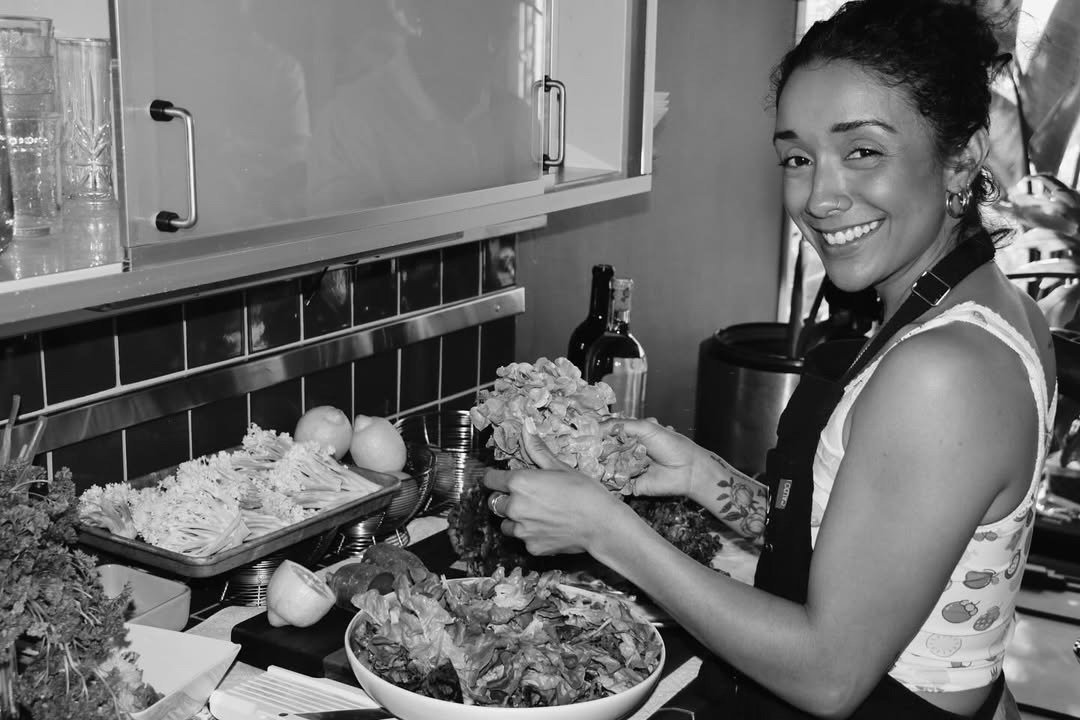
Kiki Canuto
I always joke that my first culinary mentor was Rachael Ray. As a kid, I would sit in front of her show and pretend I had my own little cooking segment. The dish I made the most was a simple fusilli with sweet peas and Parmesan. I must have cooked it a hundred times. Years later, I ended up working in a restaurant that served a similar pasta, and it brought me right back to those childhood moments when food felt like magic.
I never planned on becoming a chef. I studied to be an ESL teacher because that was the responsible choice. After a study abroad in Granada, I knew deep down that teaching wasn’t my path. It just didn’t fit. A few years later, someone encouraged me to cook professionally, and that suggestion changed the entire trajectory of my life. I took my self-taught skills and slowly made my way into the world of food, first through the personal and private chef lane. That side of the industry felt more natural to me than anything I had ever tried before.
My first real step into hospitality came at sixteen. I worked at the one and only Chowder House in my hometown. It was close to where I grew up, so of course it made sense to start there. I loved talking to people, serving them, and hearing their stories. I loved the energy of the place. At the time, I didn’t know if it was possible to make cooking and service my real career, but I knew I loved being a part of that world.
The beginning of my culinary journey felt like throwing ideas at the wall and hoping something would stick. I didn’t know what direction to take. I only knew that food needed to be part of my life in some real way. So I held onto my ambition and my curiosity. I made a promise to myself that no matter what happened, food would not disappear from my story.
What keeps me inspired is how endless this craft is. There is always something new to taste, someone brilliant to learn from, a new place to eat, and an ingredient that opens another door. Just when you think you have mastered something, you find out there is another technique or another piece of its history that deepens your understanding. I love the fact that I will never reach the end of it. There is always more to discover.
A moment that shaped me was when I realized the private side of the industry was where my heart lived. Working closely with clients gave me a sense of connection and purpose I had not felt before. I got to understand who they were beyond the meal, what their lives looked like, and how I could bring peace into their home through a simple dinner. Taking one thing off their plate so they could breathe a little easier made me genuinely happy. It never felt transactional. It felt like care.
I love fresh and seasonal ingredients prepared with intention. I do not like to complicate things. Time, attention, and good ingredients are enough. Anyone can make something delicious if they slow down, pay attention, and let the food speak for itself.
Some of my happiest memories come from cooking with my best friend in Los Angeles. We would work on different events together, laughing the whole time and talking about our favorite dishes and ingredients. Cooking with someone who understands you and shares your passion is something incredibly special. It brings you closer in a way that feels effortless and natural.
I am proudest of the moments I never expected. Cooking for celebrities, traveling the world with them, stepping into lives and places I never imagined I would see. Every time I packed a suitcase for another trip, I found myself thinking: “Is this really happening?”.Those experiences changed me. They made me braver, more grateful, and more aware of how special this path is.
What I love most about restaurant culture is the can-do spirit. When a team moves with one mentality, the energy becomes electric. Even though I did not spend years working the line, I can feel that magic whenever I dine out. It is a beautiful thing to witness.
My hope for the future of the industry is that chefs allow themselves to pursue what lights them up. I want to see more people experiment with pop-ups, try different work styles, take time off to travel, or even pivot to something new if that is what their heart is calling for. Cooking is a deep part of my identity, but it is not all of me, and I want other chefs to have that freedom too. I want them to explore every part of who they are, not just the part that shows up in the kitchen.
Photo credits to @directedbyaidan, @dwdeangelo, @nathrodriguesph & @nicoleminn.
Secret Sauce
- What’s your “guilty pleasure” meal?
I love a good beef pho!
2. A food trend that you hate and why?
Tiramisu on every menu. It’s delicious but there are other beautiful deserts out there!
3. What’s the craziest shift you’ve ever worked in the kitchen?
Had to make an apple pie at midnight for a client!
4. What happened, and how did you manage to get through it?
I made it and it was stunning, inside and out 🙂
5. What tips would you give to other cooks and chefs to help them navigate their culinary careers and find peace amid the chaos of the kitchen?
Reach out to people! Send the email, send the DM, take the call. If you don’t do it, you’ll never know what’s waiting on the other side for you.
6. What’s an underrated ingredient and why?
Scallions—need I explain?!
- What’s a must-try dish from your kitchen or the one you’re proudest to have prepared?
Rissois—my Cabo verdean version is made with bacalao 🙂
About Your City!
Copenhagen, Denmark
- If Anthony Bourdain or a chef came to your city, what would be the perfect tour itinerary from breakfast to dinner?
For Copenhagen, we start breakfast at Seks in the city center. We’ll head there early enough to skip the lines and bask in the coziness of the space. Make lunch at home because it’s my favorite meal of the day! A little market shopping beforehand would be lovely at Lygten Baazar or Norrebro Kolonial. Dinner is either a charcuterie board from Bevar’s because the toast is to die for or at Ripotot because it’s everything you want in a restaurant as a chef.
Simmering Down Self-Doubt
Humans Of The Kitchen
How kitchens, the grind, and one walk-in moment turned doubt into purpose.

Kayla Pfeiffer
I’ve always been drawn to kitchens. Growing up, I was either helping my dad, who owned restaurants, make Sunday dinner or standing beside my grandmother as she cooked. When I was seven, I got my first cookbook, and that was it. I was hooked.
My first job was as a bus girl at fourteen. I moved through the ranks quickly, learning the rhythm of restaurants, the rush of service, the energy that fills a dining room at its peak. But it wasn’t until I got to the CIA that I realized where I belonged wasn’t in the dining room, but behind the line. I became obsessed with everything about hospitality. That school transformed how I thought,
My first real kitchen job was at The Dutch, working for Andrew Carmellini. It was intense in every way —mentally, physically, emotionally—but it taught me how to work, how to prepare, and how to find joy in the grind. That kitchen changed me. It’s where I learned that the most rewarding moments are often born from the hardest ones.
I’ve had to fight through my own doubts because confidence, knowledge, and experience don’t come easily. I’m competitive, so if I weren’t fast enough or didn’t get something right the first time, I’d get frustrated. The hardest person to overcome was myself. But that drive, that stubbornness, is what made me better.
There’s one day I’ll never forget. I was still at The Dutch, and I added too much cayenne to an eggplant dip. I tried to hide it, hoping no one would notice. The next morning, my sous chef pulled me aside into the walk-in. She didn’t yell. She just made it clear that I had let my team down. That moment changed everything for me. I promised myself I’d never hide a mistake again. I’d own it, fix it, and learn.
My staff inspires me now. They’re my constant reminder of why I do this. Their stories shape the menu, and their creativity keeps me moving forward. I love to travel, but more than anything, I love to listen to people, to what they need, to what they feel. Listening is a skill that makes you not just a better chef, but a better human.
We’ve opened multiple restaurants together, and some of my team have been with me for more than seven years. We’ve gone through the stress, the sleepless nights, the chaos of openings, and every time, they’ve been there. That’s family.
Opening my first restaurant and being nominated for a James Beard Award in our first full year was surreal. Seeing us recognized among the 50 best restaurants by USA Today was the kind of moment that makes every sacrifice worth it. But honestly, what means the most is the team I’ve built. That’s my biggest achievement.
I love the chaos of restaurants, that noise, the laughter, the guests smiling when the food hits the table. But I also see what needs to change. The long hours, the pressure, the toll it takes on mental health. It’s time we talk about it. It’s okay not to be okay. We need stronger networks, open conversations, and leadership that listens.
My hope for the future is more collaboration between restaurants, artisans, local farmers, florists, and communities. I want to build bridges between people who might never work together otherwise. That’s where the magic happens.
Cooking is more than a career. It’s a lifestyle, a language, a way of telling stories without saying a word. You have to embrace every part of it, the exhaustion, the thrill, the creativity, because that’s where the real fun lives. For me, it’s in that quiet moment when I realize: this dish, this team, this life, it’s all part of the story I’m meant to tell.
Photo credits: Images 1, 2, 4, 8, 12, and 14 by @tsgnaples & Images 7 and 9 by @nanettekatherinephoto.
Secret Sauce
- What’s the most unexpected ingredient you’ve ever worked with, and how did it change your perspective on cooking?
When I was on Chopped, I had to work with confetti cake and squab, which made me realize that combination will NEVER work.
- What’s your “guilty pleasure” meal?
Baguette, good butter, Malden salt, and a bottle of red wine.
- A food trend that you hate and why?
I don’t care. If it works for you, good for you.
- What’s the craziest shift you’ve ever worked in the kitchen?
In the middle of service, an entire line walked out, and I was the only one cooking. It was a Friday night. Running from grill to sauté, wild times. Definitely made me stronger.
5. What happened, and how did you manage to get through it?
The team didn’t agree with something beyond my control, but it was my “lucky day” and they decided to rebel during a Friday dinner service. I asked them if they were sure they wanted to do that, then asked my GM cook to help (who had never worked the hot line). She’s now my best sous chef.
- What tips would you give to other cooks and chefs to help them navigate their culinary careers and find peace amid the chaos of the kitchen?
Nothing is too serious. Mistakes will happen, but life will go on as long as you can learn from them and become a better person.
- What’s an underrated ingredient and why?
Celery. It doesn’t get enough credit. When it’s shaved thin in a salad, it adds a refreshing crunch. Grilled, it becomes aromatic and flavorful. And pickled, it gives a nice tang and texture. It’s simple but incredibly versatile.
8. What’s a must-try dish from your kitchen or the one you’re proudest to have prepared?
I just put this Duck on the menu. We dry-age it for 10 days, but make a farce of the offal and leg meat, and serve it alongside the breast. It gets served with a smoked eel sayabon & a beet uemboshi jus. It’s my take on surf & turf. A lot of work goes into the dish and it’s really tasty.
About Your City!
Naples, Florida
- If Anthony Bourdain or a chef came to your city, what would be the perfect tour itinerary from breakfast to dinner?
- Breakfast: skip (double down on dinner)
- Lunch: Neapolitan Gourmet, massive Italian sandwich (tuna sando, underrated)
- Drinks: North Naples Country Club (dive bar)
Sunset by the Ritz & Pina coladas - Dinner & wine: Nat-Nat
- 2nd Dinner: onlydbls —who doesn’t like a smash burger?
Cast Iron Misfits
Humans Of The Kitchen
From outsider to mentor, building spaces where food becomes connection and self-worth.

Bradley Thomas
Food was one of the only constants in my life. I learned early that those who feed are the ones who genuinely care. I don’t have many clear childhood memories, but the ones I do all revolve around food: making dumplings with GuiShu, eating Doris’ cookies, and flipping pancakes with Addison. Food connected us, and I’ve been obsessed with that connection ever since.
Before becoming a chef, I was a professional golfer. I taught kids and worked as an assistant pro in San Antonio. Then one night, mid-service, the entire kitchen staff walked out. I jumped in to help. What started as chaos turned into revelation. The focus, discipline, and creativity I put into golf all translated, but in a way that felt more alive, more communal. That night, I found where I belonged.
I never went to culinary school. Instead, I was peer-taught. Every chef, every coworker, every late-night conversation over prep, those were my classrooms. Every mistake was a lesson. My education came piece by piece, stitched together by curiosity and respect. I learned to listen, to ask questions, to let food itself do the teaching.
I have worked in small kitchens and food trucks where creativity often meant making something out of scraps. It taught me resilience and resourcefulness. Now, in my own kitchen, I have access to the tools and ingredients that let me dream bigger. Both perspectives shaped me: the crappy side makes me resourceful, and the freedom keeps me ambitious.
The biggest challenge was proving myself without a résumé, no fancy degree, no long list of fine-dining kitchens. I had to let my food speak for me. Over time, I stopped apologizing for that unconventional path and started leaning into it. It gave me confidence and a belief that passion and persistence are their own credentials.
One moment that will always stay with me was watching Thomas Keller serve one of my desserts. Another was Nancy Silverton serving a gluten-free bread I had made. Seeing chefs of that caliber, people I had admired for years, take my work seriously was both humbling and electrifying. It confirmed that I belonged in this craft. On the other end of the spectrum, I have also carried the weight of running seasonal pastry programs as a one-man show. That experience tested every ounce of stamina and creativity I had, but it taught me resilience and sharpened my ability to adapt.
My philosophy is simple: cook with curiosity, intention, and care. Food should be playful and personal, something that sparks joy and connection. In my kitchen, collaboration matters more than ego. Respect is non-negotiable. Excellence doesn’t come from fear; it comes from joy, generosity, and a team that feels like they belong.
I’m proud of the recognition moments. Keller, Silverton, those quiet nods from people I grew up admiring. But the work that means the most to me is Cast Iron Misfits, the program I started teaching cooking classes in halfway houses and adult group homes. Using food as a mirror, a tool for reflection, a way to help people see themselves differently, that mattered more than any award.
When I moved across the country alone, I didn’t know a soul. The kitchen gave me an instant family. Service bonded us faster than anything else could. That camaraderie carried me through loneliness and reminded me that food isn’t just about feeding but also about belonging.
I love the camaraderie of restaurants, the chaos that somehow clicks into rhythm, the way food brings strangers together. However, I dislike how much of the industry still operates on burnout, ego, and fear. Too many talented cooks walk away because they don’t see a path where they can thrive without losing themselves. I want to change that. With @Loverboy_provisions, I’m trying to build spaces where joy and care matter as much as the food, where hospitality extends inward to the staff as much as outward to the guests.
At the end of the day, pastry is my way of sparking conversations. It’s joy and intimacy on a plate, sometimes playful, sometimes deeply personal. My hope is that the industry moves away from fear and exhaustion and toward connection and generosity because food should remind us not just how to eat, but how to be human.
Secret Sauce
- What’s the most unexpected ingredient you’ve ever worked with, and how did it change your perspective on cooking?
For me, the most unexpected ingredient is usually something simple and familiar. I love taking everyday things, like bananas, breadcrumbs, or marshmallows, and twisting them into something new. Turning them savory, layering in elegance, or using them in a way people don’t expect always creates this spark of surprise. It taught me that creativity in cooking isn’t about chasing rare ingredients, it’s about looking at what’s right in front of you and finding new ways to let it shine.
- What’s your “guilty pleasure” meal?
PB&J with Cheetos in it, but I’m not really guilty about it.
- A food trend that you hate and why?
The one where people aren’t eating enough.
- What’s the craziest shift you’ve ever worked in the kitchen?
Aside from the shifts with Thomas Keller, Daniel Boulud, Josiah Citrin, and Nancy Silverton, it’s the nights when guests stay for hours past closing and order French omelettes and charcuterie boards at 10:30 pm.
5. What happened, and how did you manage to get through it?
Nothing too crazy, but I had to come from pastry to make the French omelette because no one on the hot side was getting it right. I have to do what you have to do sometimes.
- What tips would you give to other cooks and chefs to help them navigate their culinary careers and find peace amid the chaos of the kitchen?
The chaos never stops, but I’ve learned not to fight it. I take a breath, trust myself, and keep moving. Curiosity keeps me passionate about the work, and taking care of myself outside the kitchen makes me stronger inside it.
7. What’s an underrated ingredient and why?
Air. It’s often forgotten, but I want you to imagine a sandwich with no air. Awful!
8. What’s a must-try dish from your kitchen or the one you’re proudest to have prepared?
My chocolate chip cookies are unbeatable, but I’m most proud of my cornsant. Masa in the brioche dough, so it’s actually corn.
About Your City!
Long Beach, CA
- If Anthony Bourdain or a chef came to your city, what would be the perfect tour itinerary from breakfast to dinner?
Since I live in Los Angeles County, let’s go with my hometown of Midland, TX. First stop is Oscars Super Burrito for a brisket and potato burrito with extra salsa. Incredible. No stopping, we go straight to Rosas Tortilla Factory to keep the theme. Two number 14 chickens. They’re small fajita burritos with fresh flour tortillas and incredible queso. Next- Bahama bucks for a small snow cone. Any flavor. We can hang out at the Petroleum Museum until dinner at a surprisingly authentic and delicious Thai spot, The King and I.
A dumpling soup that shifted it all.
Humans Of The Kitchen
The quiet comfort that survived addiction, chaos, and every version of who she used to be.

Blake Larson
I didn’t grow up with many food memories. The kitchen found me when I needed it most, after a long time spent running from myself. However, it wasn’t the food that drew me in. It was the camaraderie, the sense of belonging. But if I had to pick one memory, it would be the potato and dumpling soup my nanny always had on the stove when I came to visit. It tasted like safety, like love, like home.
Before I became a chef, I was a musician. I spent years fighting addiction, trying to find a rhythm that didn’t destroy me. During my recovery, I was living in Canada with my band, needing a reason to stay. I enrolled in culinary school to keep my work visa and took a job at a gastropub to stay busy. The kitchen was sober, the first one I had ever seen like that. The guys there became my best friends. They taught me what it meant to show up, for them, for myself, even when I had nothing left to give. When my visa expired, I had to make a choice. Music had been everything to me, but the life that came with it was breaking me. So I went back home to North Carolina and started over.
Culinary school in Ontario taught me consistency more than cooking, and honestly, consistency was what I needed most at the time. But my real education came afterward, when I fell, failed, burned out, and built it all back again.
At twenty-three, I became an executive chef. I was young, loud, and full of ego. I thought becoming meant shrinking myself to fit the mold. Later, I thought leading meant yelling to be heard. Both were wrong. I learned the hard way that respect isn’t demanded. It’s earned, and it starts with how you treat yourself.
Being a woman in this industry made it even harder. I’ve dealt with harassment, condescension, and the exhausting balance of being “strong” without being labeled “difficult.” I used to think I had to endure it to succeed. Now I know I can simply leave, build my own table, and invite people who understand what respect means. Birds of a feather flock together, and my flock fights for the right things.
Cooking taught me how to begin again. It gave me the strength to kill the version of myself I hated without dying in the process. I’ve made a thousand mistakes, but I’ve also learned to alchemize them, to turn every mess into something meaningful. When I thought no one was watching, people were. And now, when young chefs tell me my story inspires them, I realize that survival was never just for me.
There was a moment that changed everything. I was working myself into the ground, running a kitchen that didn’t value me. My sous chef called one day to say he was really sick and needed time off. Without thinking, I asked, “But who’s going to cover your shift?” The words hit me like a punch. I hung up and sobbed. That was the moment I realized I’d lost myself, and I quit the same week.
My philosophy now is that food is love, and love is effort. Cooking began with our mothers and grandmothers, who used what little they had to feed their families. We’ve become a society of want, forgetting the power of need. We waste food while people starve, exploit farms for convenience, and break cooks until they burn out. I won’t be part of that. Every ingredient, every person, every plate matters. I’ll give it everything I’ve got, because the kitchen is supposed to nourish, not destroy.
The camaraderie of my first kitchen saved my life. I had lost my best friend at sixteen, fell into addiction, and didn’t know how to belong anywhere. Then I walked into that kitchen in Ontario and found my people. They made me laugh again. They reminded me what it meant to show up, not just for work but for life. Later, when I led my own team in Asheville, I tried to give them what I once found. Belonging, friendship, purpose. It wasn’t always perfect, but it was honest.
My proudest moment came when my wife and I launched our food project in rural Ohio —a bakery and dining concept in the middle of nowhere. People laughed at us, said we’d never make it. But we built it from scratch, got our baked goods into eighteen locations, launched a food truck, sold out every service, and brought a community together. Two queer women opened a restaurant in a place that didn’t welcome our kind, and we were shown so much love. Our mission was simple: every menu ended with “love u.” And we meant it.
This industry has always been a haven for misfits, but it’s broken too. We can’t keep thriving on the pain of the people who give it life. The kitchen has to become a place of healing again, of honesty, care, and humanity.
I hope we start cooking from love again. I hope we remember the women who came before us. I want to create spaces where everyone, especially women, can lead, make, and be safe. I want us to stop chasing perfection and start chasing purpose. Food can save us, but only if we let it.
Photo credits to @dcsmith13, @catieviox, @explore.Cincinnati & @josiewickerhamphotography
Secret Sauce
- What’s the most unexpected ingredient you’ve ever worked with, and how did it change your perspective on cooking?
I recently fermented some figs with vanilla for a month or so, and made a fig jam with cold brew. I’m not one for crazy imported ingredients; I work on an organic farm and try to utilize every part of the produce as best as I can. The joy for me is in what I can do with something most may consider boring.
- What’s your “guilty pleasure” meal?
I am a sucker for Uber Eats. So after a long push in the kitchen, I order red Thai curry with tofu to my door and don’t leave my couch. It’s a magical experience.
- A food trend that you hate and why?
Chefs who lean too heavily on meat. It’s easy to make something taste good with beef. That’s not skill, that’s comfort. Show me what you can do with vegetables. That’s where true creativity and technique come through.
- What’s the craziest shift you’ve ever worked in the kitchen?
One time, at this terrible company I worked for, the kitchen literally caught on fire. The oven they gave me was broken, the fire department was on my line, and they still wouldn’t let us close. My sous chef was in the alley throwing up, everyone was working through the smoke, and my boss just told me to move the guests upstairs like it was no big deal.
5. What happened, and how did you manage to get through it?
I told the boys they could leave and that I’d handle it, but they stayed. They said they wouldn’t leave until the captain did. We pushed through and finished the shift. The next day, when the boss tried to make us open again, one of my cooks threatened to file a lawsuit. That’s how we finally got the day off.
6. What tips would you give to other cooks and chefs to help them navigate their culinary careers and find peace amid the chaos of the kitchen?
Honor yourself in every way; no one else will. Trust your gut, and do your best every single day. If it isn’t for you, it isn’t for you. But if it is, be a trailblazer.
7. What’s an underrated ingredient and why?
Love. Most chefs use their trauma and wounds to reach the top. You can get the star, the James Beard, the accolades, but if you’re still empty at the end of the day, what the hell was it all for?
8. What’s a must-try dish from your kitchen or the one you’re proudest to have prepared?
My squash cream, merengue, and puffed sorghum granola dessert.
About Your City!
Cincinnati, Ohio
- If Anthony Bourdain or a chef came to your city, what would be the perfect tour itinerary from breakfast to dinner?
We’d grab breakfast at North South Baking Co. for some pastries. For lunch, Alveo, for the best place for sandwiches around. And for dinner, Pepp and Delores.
From Tech to Taste
Humans Of The Kitchen
How Trevor’s time in tech shaped the way he designs thoughtful, intentional dining experiences.
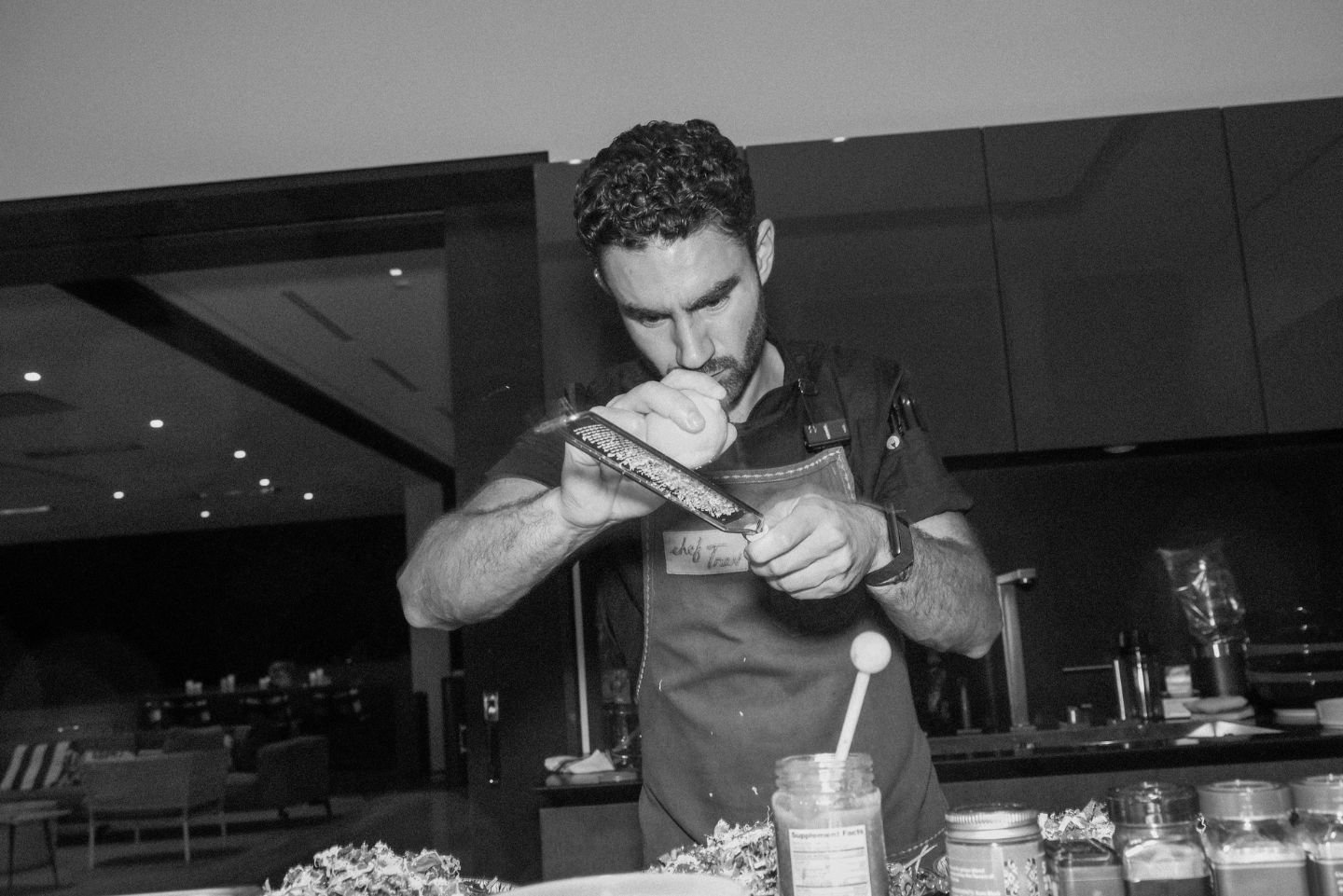
Trevor Brown
I grew up north of Boston, where food was always tied to family and storytelling. Some of my earliest memories are of sitting at the kitchen island next to my mom while she cooked, watching how something as simple as garlic hitting olive oil could fill the house with warmth. My dad worked a lot, so dinner was the time when we all came together. That table was where I learned that food could hold space for connection.
Every summer, we planted a garden in the backyard. Tomatoes, herbs, cucumbers, and mint. We would spend weekends picking ingredients straight from the soil for dinner. I did not realize it then, but those moments were teaching me that food is medicine. It taught me to respect what we grew and to cook with what the earth offered that season.
Before I ever stepped into a kitchen professionally, I worked in tech. I spent years at Apple, then launched companies focused on understanding human behavior. I was helping brands tell stories that moved people, but eventually I realized I wanted to create those stories myself, in real life, through food and community. That chapter taught me systems, structure, and emotional connection. It shaped how I build every experience now with @cheftrevpresents, from the first message a guest receives to the final bite of dessert. Every detail is designed with intention.
I never went to culinary school. My learning happened in markets, on the road, and in conversations. Beijing taught me about flavor as culture. Mexico City reminded me that the market is a classroom. Southeast Asia showed me that cooking can be both medicine and art. I approach food more as an artist than a technician, driven by intuition, curiosity, and the pursuit of meaning in every dish.
Being self-taught has also shaped how I lead my team. I encourage experimentation, conversation, and trust over hierarchy. We learn together, and that shared discovery shows up in the food we create.
The first time I stepped behind the line during service, I felt something familiar. The rhythm of pans, the sound of orders, the quiet coordination of a team felt like coming home to a language I already knew how to speak. That experience taught me presence. It was not just about cooking well but about how I moved, listened, and handled pressure. The kitchen became a mirror for life itself.
Early on, I struggled with balance. I came from a world of ideas and storytelling, where creativity led everything. The kitchen taught me humility and respect for structure. Timing and repetition became my teachers. I also questioned whether I belonged because my path had not been traditional. But with time, I realized that being different gave me perspective. It helped me see food not just as a craft, but as a connection.
There was one night during a dinner when I looked around and saw my team completely in sync. The fire was going, the room alive, and I watched Ren and Adam move with quiet purpose, calm in the chaos. I felt a deep wave of gratitude. It hit me that this was no longer about me. It was about creating a space where others could live fully in their purpose. Watching them thrive reminded me of why I do this to build something that allows people to shine.
To me, the kitchen is a living ecosystem. Every person and every action affects the energy of the room. My job is to hold that energy, to create a space where creativity, respect, and flow can coexist. Food carries energy. You can taste when a dish was made with care, and you can feel when a team is connected. Leadership is not about control; it is about alignment. When everyone is in rhythm, the kitchen becomes sacred.
There was a period in my life when I was grieving, questioning direction, and trying to find myself again. Cooking was the one thing that stayed constant. It grounded me when nothing else did. The kitchen became both my refuge and my prayer. It carried me through silence, through loss, and back into life.
What I am most proud of is not an award or a single event. It is the community that continues to grow around Chef Trev Presents and the Bamboo Oasis. What began as dinners with friends has become a gathering place where strangers connect through food, story, and shared energy. The nights where people linger long after dessert are the ones that mean the most. That is when I know we did something real.
What I love most about restaurant culture is the sense of family that forms when things are done right. When the kitchen is healthy, it feels like music. Everyone moves with intention. What frustrates me is how often that harmony is lost to burnout and ego. Too many people have been broken by a system that forgets they are human. I will never forget when a teammate once told me, “In this kitchen, I don’t feel worthless.” That sentence stays with me. It reminds me why I do this work.
My hope for the future of this industry is that we value people as much as we do products. I want to see a shift toward sustainability in every form, human, creative, and environmental. At Chef Trev Presents, we are exploring what that could look like: smaller, more intentional dinners that prioritize connection over volume, collaboration over competition. We create spaces where chefs, artists, and guests all feel part of the same experience.
I believe the future of food lies in transparency, wellness, and storytelling. My role is to keep proving that you can build something soulful and scalable at the same time.
For me, cooking has always been a language of care. Every event, every menu, every fire is a reflection of that belief. Food has the power to heal, to bridge, to remind us that we belong. What matters most is not the spotlight or the scale, but the impact. Seeing a guest’s eyes light up with the first bite, or hearing a teammate say they feel witnessed, that is the story I want to keep writing.
Photos by @joseph.nicolas.duarte & @alishajucevic
Secret Sauce
- What’s the most unexpected ingredient you’ve ever worked with, and how did it change your perspective on cooking?
Fermented black garlic. The first time I used it, I was blown away by how deep, sweet, and funky it could be. It reminded me that fermentation is a transformation, and that patience often yields the most complex flavors.
- What’s your “guilty pleasure” meal?
A perfect breakfast sandwich: sourdough, soft scrambled eggs, crispy bacon, and parmesan cheese. Ideally eaten standing.
- A food trend that you hate and why?
The obsession with hacking your way to protein. Everyone’s chasing numbers instead of nourishment. I believe in eating food your body can actually absorb, not food focused on a number scale.
- What’s the craziest shift you’ve ever worked in the kitchen?
During our very first Chef Trev Presents dinner, I handmade over seventy-five tortillas from scratch during service.
5. What happened, and how did you manage to get through it?
I was hand-making over seventy-five tortillas from scratch during service when our scale broke. My ideally tested masa-to-water ratio suddenly didn’t matter anymore, and I had to trust my instincts completely. It was pure chaos on a timer: feeling the dough, adjusting by touch, reading the texture, and just rolling with it.
- What tips would you give to other cooks and chefs to help them navigate their culinary careers and find peace amid the chaos of the kitchen?
Lead with intention, not ego. Remember that you’re feeding humans, not just executing plates. Breathe before you plate, taste before you talk, and never forget why you’re there.
- What’s an underrated ingredient and why?
Edible flowers. They’re often treated as garnish, but they hold so much quiet power. A single blossom can change the entire mood of a dish.
8. What’s a must-try dish from your kitchen or the one you’re proudest to have prepared?
Our crispy rice. It’s the perfect balance of texture, fire, and flavor. Every version we make tells a slightly different story, but it always represents what I love most: taking something simple and making it unforgettable.
About Your City!
Highland Park, Los Angeles, CA
- If Anthony Bourdain or a chef came to your city, what would be the perfect tour itinerary from breakfast to dinner?
We’d start the morning at the beach in Venice, with a coffee and pastry from Gjusta to set the tone. Then grab a quick onigiri from Sunny Blue, and head east for brunch at All Time in Los Feliz. From there, we’d cruise over to Highland Park for an afternoon of street tacos, ending up at The Greek Theatre for a show under the stars. Dinner would be Hama Sushi in Little Tokyo, and we’d close the night back home with my flourless chocolate cake for dessert.
When Cooking Became His Lifeline
Humans Of The Kitchen
How stepping away from a dark path led him toward a craft that helped him rebuild himself.
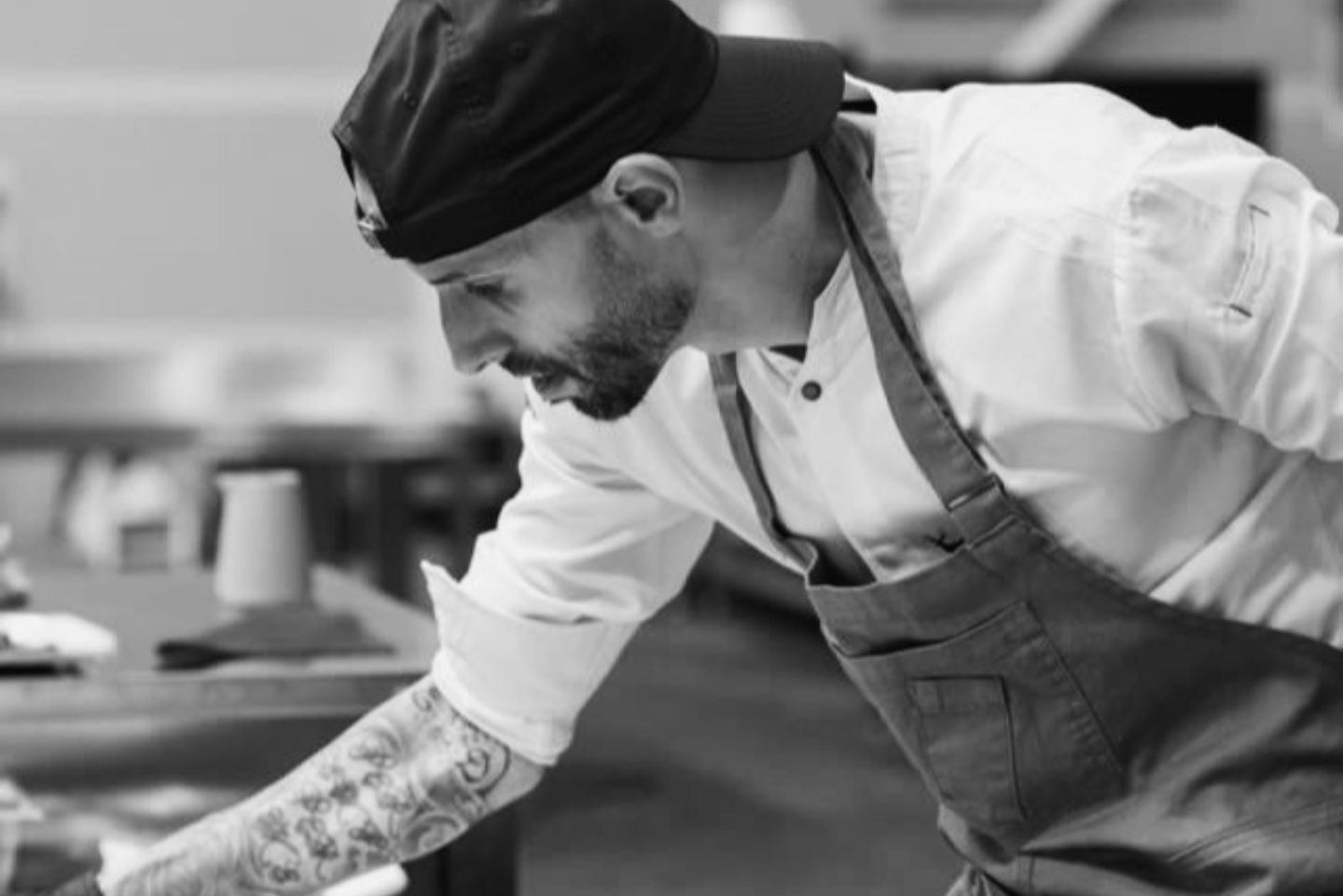
Vesselin Boykinov
When I think about my childhood, I remember spending hours in the kitchen with my grandmother. She used to let me help her knead dough and taste sauces, explaining how every ingredient had its own story. The warmth, smells, and laughter we shared made me fall in love with cooking. It felt like magic, creating something that could bring people together.
Before I became a chef, I was going down a dark path. I didn’t know what direction my life was taking, and I didn’t like who I was becoming. One day, I decided to change everything. Cooking became my way out, a language I could use to say things I couldn’t express with words. Through food, I started to rebuild myself, piece by piece.
I didn’t attend a formal culinary school; instead, I learned most of what I know through practice and by working alongside inspiring chefs. Learning by doing has helped me develop intuition and creativity in the kitchen. My approach to cooking is rooted in curiosity and dedication. I’m always experimenting, learning, and finding joy in improvement. This journey has allowed me to reach a level where I can now create my own dishes.
When I first stepped into a professional kitchen at the age of twenty-two, I was working as a kitchen assistant in a small bistro. The sound of knives hitting the cutting board, the aroma of caramelizing onions, and the rush of incoming orders filled the air. Instead of feeling stressed, I experienced a deep sense of peace. In that moment, it felt as though the world finally made sense. That first kitchen taught me discipline, rhythm, and the importance of belonging to something greater than myself.
In the early days, I struggled with consistency. I wanted every dish to taste the same, to be perfect every time. It took years of repetition, patience, and obsession to understand that mastery isn’t about perfection but about persistence.
One moment that marked me forever came during a busy service. I made a mistake on a dish and expected to be shouted at. Instead, the chef looked at me calmly and said, “We don’t cook for our ego, we cook for the guest.” That sentence changed me. It shifted my focus from myself to the people across the table. It taught me that cooking is about care, not control.
My philosophy in the kitchen is to respect everything. Respect the ingredients, the farmers who grow them, the team that stands beside you, and the guest who trusts you with their meal. The kitchen is my temple, a place where chaos and beauty exist together. I believe in leading with calmness and kindness, showing by doing, and building trust through integrity.
There was a time in my life when I was lost again, when things outside the kitchen started to fall apart. But in the kitchen, I found my balance. My team became my family. The laughter during prep, the quiet nods of understanding during service, that sense of unity pulled me through. Cooking reminded me that no matter how heavy life gets, there’s always a way to create something beautiful from what’s in front of you.
One of my proudest moments was being trusted to lead a team during a hectic season. At first, I doubted myself. But when I saw my crew working smoothly, communicating, and creating magic together, I realized that leadership isn’t about authority; it’s about harmony. That night, I understood the true meaning of success: not being the best, but bringing out the best in others.
What I love most about this industry is the chaos. That tension and creativity that keeps you alive. I love how people from completely different backgrounds come together for the shared purpose of making someone happy through food. But some things still frustrate me, like investors who see restaurants as money machines rather than living, breathing spaces built on emotion. Too often, chefs are undervalued, their work treated as replaceable. I want that to change.
My vision for the future is more respect, more sustainability, more humanity. I want to see kitchens where creativity thrives in balance with well-being, where chefs are valued not only for their skill but for their spirit. I want a world where we care as much about the people behind the food as we do about the food itself.
Personally, I try to contribute by supporting local producers, working with a zero-waste mindset, and sharing my knowledge with younger cooks to promote a healthier and more ethical culinary culture.
Cooking has never been just a job for me. It’s how I speak, how I heal, how I give back. Every plate I send out is a story of who I was, who I am, and who I’m still becoming.
Secret Sauce
- What’s the most unexpected ingredient you’ve ever worked with, and how did it change your perspective on cooking?
The most unexpected ingredient I’ve ever worked with was rosehip flour. I used it in a dessert and discovered how much depth and balance such a seemingly simple ingredient can bring. With it, I created a gelato that earned recognition and an award for flavor innovation at an international exhibition in Plovdiv. This experience taught me that cooking is a game of contrasts — sour versus sweet, fresh versus intense — and that there are truly no limits to experimentation.
- What’s your “guilty pleasure” meal?
I have to admit I’m obsessed with fries. Even after a long day in the kitchen, I can always find room for a few more crispy, salty bites.
- A food trend that you hate and why?
I don’t like the trend of turning food into a soulless lab experiment. Innovation is great, but food should always carry emotion, not just precision.
- What’s the craziest shift you’ve ever worked in the kitchen?
The craziest shift I’ve ever worked was a 36-hour shift without a single break. We were under enormous pressure, with a full dining room and limited resources, but adrenaline and team spirit kept me on my feet. By the end of that challenge, I didn’t feel tired; I was only satisfied that we managed to get everything out on time without compromising quality.
5. What happened, and how did you manage to get through it?
I focused on staying calm and setting the team’s pace. We supported each other, covered every station when needed, and kept the service running smoothly. In the end, teamwork and determination made all the difference.
- What tips would you give to other cooks and chefs to help them navigate their culinary careers and find peace amid the chaos of the kitchen?
I’d tell every chef to stay calm, even when the kitchen feels like chaos. Organization and communication are everything; without them, even the best chef can’t succeed. Never stop learning, and always remember why you started. Passion for food is what keeps you going.
7. What’s an underrated ingredient and why?
Black garlic is an incredibly underrated ingredient. It has a deep, almost caramel-like flavor with notes of balsamic and umami that can transform even the simplest dishes. I use it in purees, sauces, and dressings where it adds complexity and elegance without the sharpness of regular garlic. Recently, I even tried a colleague’s dessert —a white chocolate and black garlic bonbon —and it was an absolute explosion of flavors.
8. What’s a must-try dish from your kitchen or the one you’re proudest to have prepared?
The must-try dish from my kitchen is Deer with a stuffed Morel mushroom filled with homemade “Petrohan” sausage, served with young pea cream, mushroom broth, and fermented porcini cream. Every step of its preparation requires attention and patience, but the result is creamy, aromatic, and deeply satisfying. It’s a dish that always leaves a lasting impression on my guests.
About Your City!
Vratsa, Bulgaria
- If Anthony Bourdain or a chef came to your city, what would be the perfect tour itinerary from breakfast to dinner?
If a well-known chef came to Northwestern Bulgaria, I’d start the day with a traditional breakfast. Freshly fried mekitsi with homemade cheese and honey from a local beekeeper, served with strong coffee in the town square. Then we’d visit a local farmers’ market where small producers offer cheese, cured meats, and seasonal vegetables.
For lunch, we’d stop at a local winery that serves regional wine varieties paired with dishes designed to complement them.
The day would end at my restaurant, where local ingredients meet modern interpretation. The Northwest has a raw, honest cuisine with few ingredients, but a lot of soul.
From Stage Lights to Stove Heat
Humans Of The Kitchen
The dancer who traded choreography for cuisine, carrying rhythm and presence into every dish.
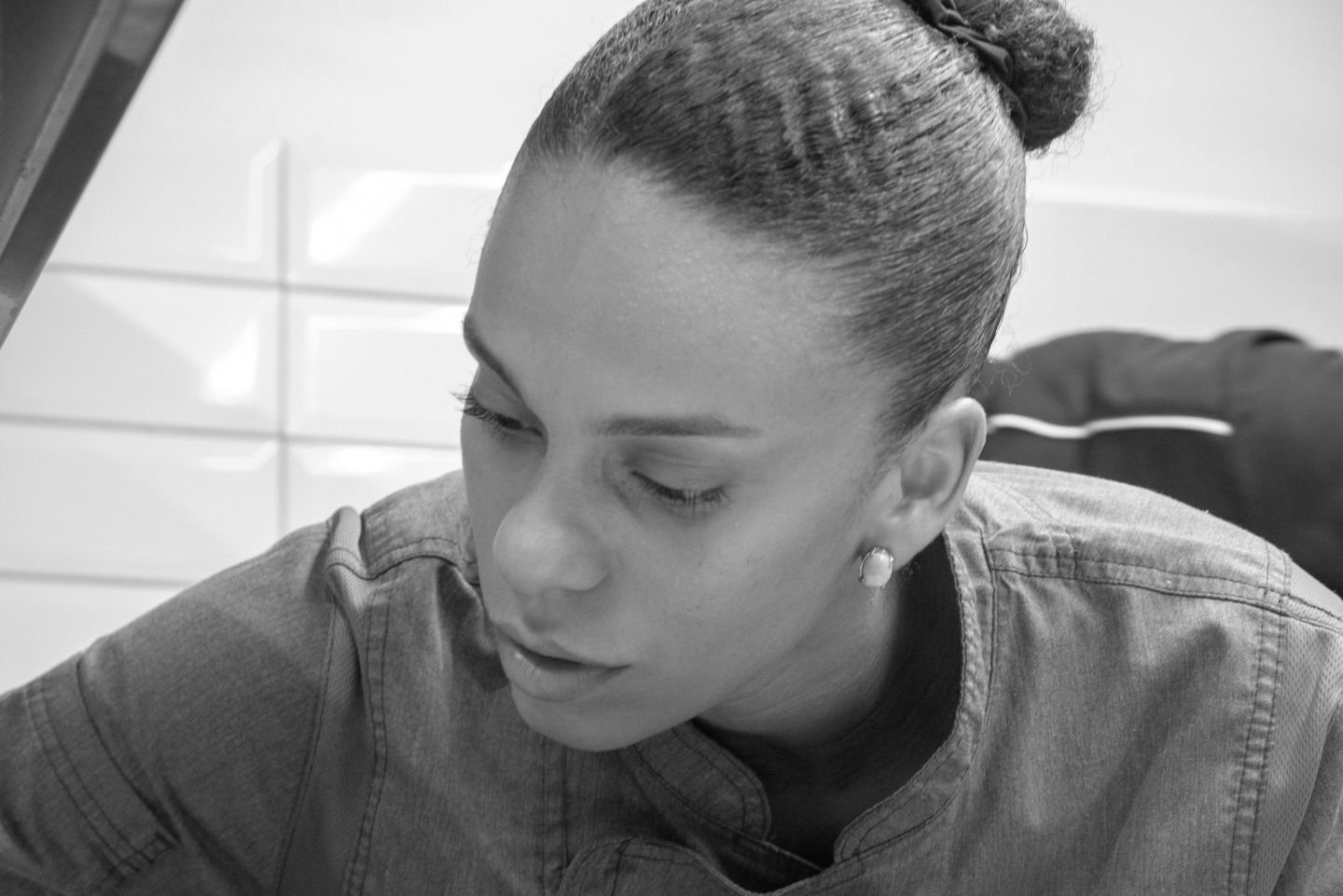
Aurora Emilia Despradel Casilla
I grew up in a small town called Miracielo, in the south of the Dominican Republic. A dry coastal region crossed by rivers, where everything feels touched by ancestry. Our road trips to buy ingredients felt like mini adventures. I remember the fishermen calling out the catch of the day, the farmers selling plantains from the back of their trucks, the women who woke up before the sun to make sweets that tasted like tradition. Food there is a story of roots, community, and memory.
But the heart of it all was my grandmother, Carmen. She taught me what love tastes like. Her cooking is simple, balanced, and complete with care. The way she moves in the kitchen is pure intuition and heart. Everything I know about flavor, respect, and patience started in her hands.
Before cooking, my whole life was dance. I was a professional dancer from the time I was seventeen. Ballet, contemporary, theater stages, music videos, and award shows. Dance gave me rhythm, discipline, performance, and the courage to take up space. Those things still live in every dish I make.
But when I wanted to study culinary arts, there were no proper programs on the Island. So I studied Hotel Management first to access the culinary courses within it. At the time, it felt like a detour, but today I see how valuable it was. It gave me business structure, planning, and leadership. The Basque Culinary Center came later, after many sacrifices. That is where I refined my technique and learned to see ingredients with new eyes.
My first stage happened because of a ceviche. I tasted it and it completely stopped me. It was made by a Dominican chef who had lived in Peru and worked for many years with a Japanese chef. The respect and precision behind that dish changed everything for me. I went back to that restaurant again and again until they finally let me stage with them. I saw the chaos of service, the pressure, the sacrifices, the exhaustion, the adrenaline, and I thought, “This is insane, but I love it.”
Then came Europe. A small-town island girl, with almost no experience, inside a three-Michelin-star kitchen. I felt like I was constantly climbing a mountain with no rest. I questioned myself endlessly. I felt alone more times than I can count. I cried a lot. But I stayed even when my hands were shaking, even when my voice was small, even when I doubted everything. I stayed because my dream was bigger than my fear.
A day that marked me forever in the kitchen was in the middle of a hard shift, when the chef handed me a chocolate-and-rosemary dessert. The flavor stopped me completely. It was strange, beautiful, and emotional. That bite changed my relationship with herbs forever. It reminded me that food is not just about taste. It is memory. It is feeling. It is storytelling.
Today, my philosophy in the kitchen is that food is love, so I cook with plenty of it. I come from kitchens where kindness was rare, where mental health was not a conversation, where you were expected to break yourself in order to be great. So I chose a different path. I lead with respect, with patience, with humanity. I want my dishes to be beautiful, but I want my team to feel safe, supported, and seen. I do not rush their growth. I protect their joy. I want excellence without cruelty.
Being a brown, immigrant woman in European fine dining often left me standing alone. I felt I had to prove myself twice to be seen once. But I also found people who held me up when I needed it. Some of those people are now my family.
I love that through food and restaurant culture, I can reach people I might never have met otherwise. I love giving love, attention, and care to people I don’t even know, and being part of their special moments is such a beautiful feeling. But there’s still so much to work on in this industry. Like many others, it’s a world where people burn out, where health often takes a back seat to success. I understand that greatness requires sacrifice, but I believe we can reach a point where we don’t have to destroy ourselves to create something amazing.
I wish the industry were more gentle and accepting of diversity. I want to see more women leading kitchens, more diverse chefs creating and being celebrated. I was often the first brown woman in the spaces I worked in, and I don’t want to be the last. I want to see diversity not just in kitchens, but in the food we serve and the stories we tell through our menus.
I want to see more kindness. The idea that you have to be mean and harsh to be a good chef doesn’t inspire me. As a leader, I try to be strong, disciplined, and hold high standards, but also kind, nurturing, and healing for my team. I want to build teams that grow, not burn out.
There was a time when I ended up in the ER every two weeks because I was exhausted and not taking care of my body or mind. We give everything to this craft. I wish the craft gave a little more back.
Photo credits to @aquelmanuelgarcia & @hairo_reyes
Secret Sauce
- What’s the most unexpected ingredient you’ve ever worked with, and how did it change your perspective on cooking?
I am currently experimenting with fermentations. I wasn’t a big fan of it, but lately I want layers and complexity in my flavors.
- What’s your “guilty pleasure” meal?
TACO BELL.
- A food trend that you hate and why?
It’s not that I hate it, but if an ingredient is fabulous in its natural state, why change it into a sphere?
- What’s the craziest shift you’ve ever worked in the kitchen?
22-hour shifts.
5. What happened, and how did you manage to get through it?
I don’t know how I managed to get through it. I was just very happy and excited to be able to do that event; it was magical.
- What tips would you give to other cooks and chefs to help them navigate their culinary careers and find peace amid the chaos of the kitchen?
Prioritize your well-being; if we all do it, the industry will be forced to change the way it operates.
- What’s an underrated ingredient and why?
Tayota or chayote, it’s my favorite ingredient. I feel like I was the only one using it in my country for a while.
8. What’s a must-try dish from your kitchen or the one you’re proudest to have prepared?
My sauces overall are so so good. Any sauce that comes out of my kitchen is pretty tasty and punchy.
About Your City!
Dominican Republic
- If Anthony Bourdain or a chef came to your city, what would be the perfect tour itinerary from breakfast to dinner?
For breakfast, I would take him to Barra Payán, a very famous sandwich shop, so that he could have a typical Dominican street-food breakfast. Then I would take him to Playa Najayo to eat fried fish, Johnny cakes, and rice with pigeon peas. And finally, for dinner, to Joa Pica Pollo, a popular place that serves Dominican-style fried chicken.
Lessons from the Wild
Humans Of The Kitchen
From Kenya’s nature to one small kitchen where big dreams began.
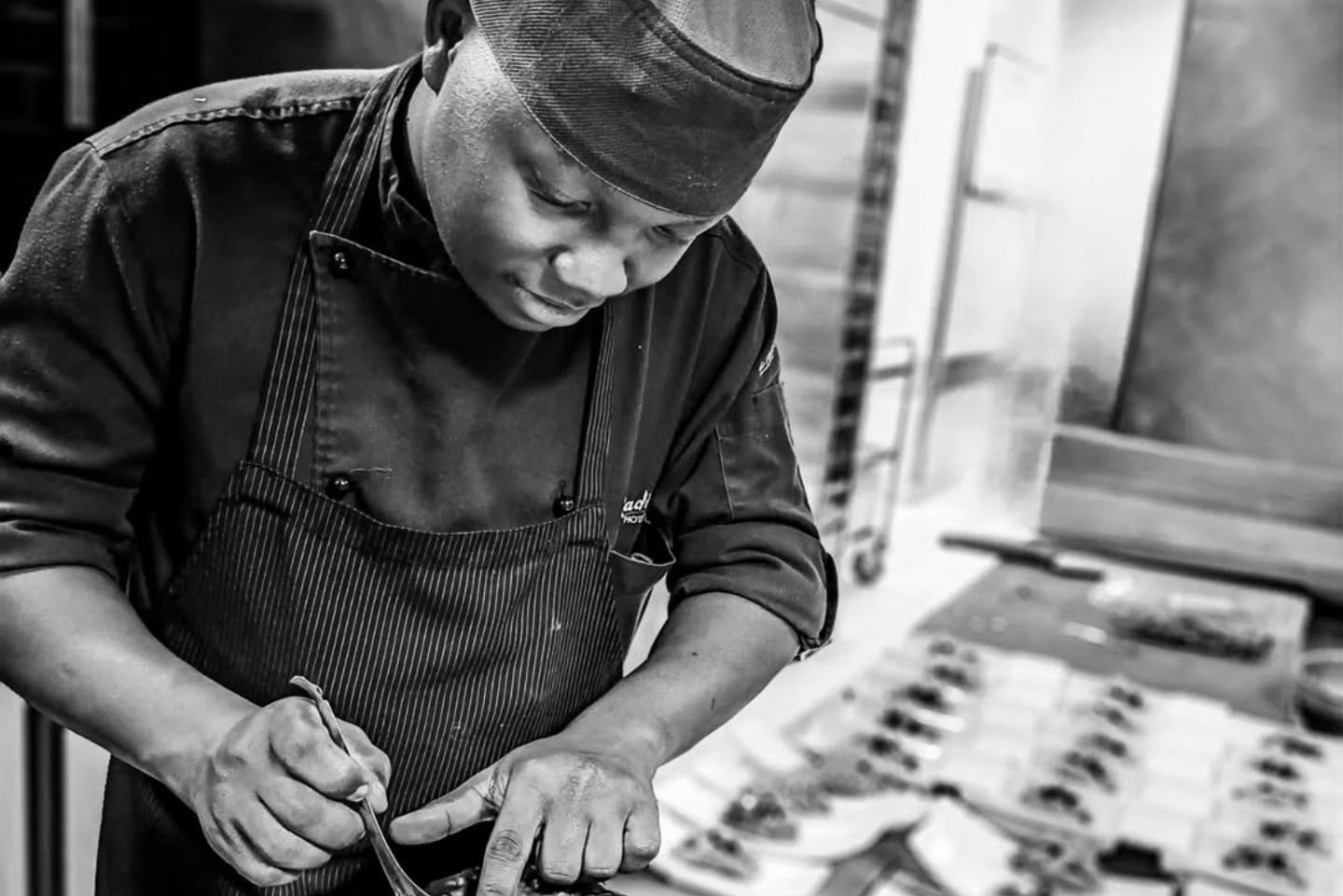
Jeremiah Kioko Kimweli
I grew up in a home where the kitchen was the center of everything. We were three kids, and my mom worked long hours, so she always made sure there were ingredients ready for my older brother to cook. But I always found myself stepping forward, asking him to let me try. The dish I loved most was Pilau ya Nyama. Back then, I just called it that, but today, as a chef, I’d call it Spicy Beef Pilaf. Usually eaten with a banana on the side, that dish is one of my favorite Swahili dishes to date.
I didn’t start in a big kitchen. I started in a small mini mart where we had just one stove to make tea and lunch. I used to offer to cook for everyone. My colleagues joked, “wewe ni mpishi,” which means “You’re a good chef,” and it stuck with me. They didn’t know it, but those lunches were the beginning of everything. That’s where I learned that food brings people together.
I went to Karen Technical Training Institute for the Deaf. I was a hearing student studying among deaf students. That experience shaped the way I communicate. I learned that leadership begins with listening. During our practicals, we would work in teams, present, and be done. But one lecturer would always tell me to stay behind and make one dish again by myself. At the time, I didn’t understand why. Now I know she saw dedication before I even understood the word. May God bless her for that.
My first real kitchen was at Karen Country Club, a private members’ golf club in Nairobi. I was fresh out of culinary school, nervous, curious, and eager to prove myself. The place had elegance, discipline, and silence that said everything. I started with the smallest jobs. Cutting. Peeling. Watching. There is a certain humility required to stand at the edge of the pass and study how food becomes memory. That kitchen gave me foundation and patience.
A moment that shaped me most was in Tsavo West National Park, a Luxurious Camp Hotel. My executive chef, Chef Ken, taught me how to respect ingredients. Real respect. Not just technique. Respect for where flavor begins. He trained me station by station, side by side. We grew herbs in the back garden and harvested them ourselves. He showed me how food can connect land, hands, and soul. Until now, he has been my mentor.
The early challenges were physical and emotional. Long shifts, heavy prep, the pressure of banquets. My body wasn’t ready. My mind wasn’t prepared. But passion has its own stamina, and I learned to adapt. I reminded myself that I was here for a reason. My parents reminded me too. My dad always says I took the road he wished he could walk. So I walk it for him too.
I used to be quiet in the kitchen. Too quiet. Being introverted in a loud environment is not easy. But a friend of mine, Chef Kilote, told me something that changed everything: “Get your basics right. Practice. Learn flavor. Let the work speak.” So we sharpened our skills until confidence became muscle memory. Until our silence spoke for us.
Working at Chophouse was a milestone. Not just the food, but the leadership as well. Menu development, art on a plate, and the joy of showing the world what we can do through photography and storytelling. It proved that creativity is meant to be shared. That food is also a voice.
There is so much I love about kitchen culture: The brotherhood, the drive, the discipline, the joy of creating something that didn’t exist that morning. But I’ve also seen what needs to change, like low wages, burnout, gatekeeping, and the fear of letting new voices rise. I want kitchens to become more human, more inclusive, and definitely more intentional.
I use my platform to tell real stories, mentor young cooks, and lead with empathy. I want to build teams that feel seen. I want to create spaces where every hand in the kitchen matters. My goal is to help develop a culinary world that values both people and creativity.
Let kitchens be places where chefs grow, not break. Where people are paid fairly and leadership is not about ego, but about guidance. Where creativity is not owned, but shared.
📸 Credits to @victar_wahome, @pauline_ciqu & @g_a_c_h_e_r_u
Secret Sauce
- What’s the most unexpected ingredient you’ve ever worked with, and how did it change your perspective on cooking?
Fermented cassava flour, used in traditional dishes like kimanga and some versions of mukimo, was the most unexpected ingredient I’ve worked with. Its sour, earthy flavor challenged me at first, but it taught me to embrace complexity and cultural depth. It shifted my perspective from chasing polished perfection to honoring tradition and transformation in cooking.
- What’s your “guilty pleasure” meal?
Kuku and chips, crispy fries, and chicken wings. It’s simple, satisfying, and always hits the spot after a long shift. No fancy plating, just pure comfort and flavor.
- A food trend that you hate and why?
I’m not a fan of food trends that prioritize gimmicks over flavor, like rainbow dishes or gold leaf. They often distract from the real story and the food’s taste. I believe good cooking should connect, not just impress.
- What’s the craziest shift you’ve ever worked in the kitchen?
It was a lunch shift, we were short-staffed, and the bookings were crazy. The good thing is that mise en place was on check, so it was just execution and sending the food. It was messy since I worked in like three sections. It was fun in chaos.
5. What happened, and how did you manage to get through it?
We usually open the shift with two chefs; this time, we told the interns who joined us to take a day off, not knowing whether bookings and walk-ins would surge. I got through it by staying calm, prioritizing tasks fast, and leaning on clear communication. We pulled together and somehow made it work. That shift reminded me how much resilience and teamwork matter in the kitchen.
6. What tips would you give to other cooks and chefs to help them navigate their culinary careers and find peace amid the chaos of the kitchen?
To navigate a culinary career and stay grounded, lead with empathy, learn the business side, stay curious, protect your peace, build your brand, ask for help, and always remember why you started. These habits help you grow and find balance amid the chaos.
- What’s an underrated ingredient and why?
Amaranth leaves (terere). Often seen as a basic side dish, they’re actually nutrient-dense, flavorful, and incredibly versatile. When sautéed with garlic and a touch of acidity, they shine. But they also work beautifully in dumpling fillings, green sauces, or even folded into pasta dough for a vibrant color and earthy taste. Terere proves that humble greens can be gourmet.
8. What’s a must-try dish from your kitchen or the one you’re proudest to have prepared?
Tofu.
About Your City!
Kenya
- If Anthony Bourdain or a chef came to your city, what would be the perfect tour itinerary from breakfast to dinner?
- Breakfast: Start with Kenyan tea, sweet potatoes, or mandazi in Westlands or at a farm-to-table spot like Cultiva.
- Morning: Visit City Market or Gikomba for fresh produce and street snacks like mutura and grilled maize.
- Lunch: Try Mama Rocks for gourmet burgers or Ranalo Foods for classic Kenyan dishes like ugali and tilapia.
- Afternoon: Explore local art at GoDown or the museum, then grab coffee at Artcaffe or Spring Valley.
- Evening: Enjoy cocktails at Hero Bar or chill at The Alchemist with music and street food.
- Dinner: Dine at Nyama Mama, Talisman, or INTI for elevated Kenyan cuisine.
From Runways to Recipe Books
Humans Of The Kitchen
While others chased lights and cameras, she chased flavors and textures.
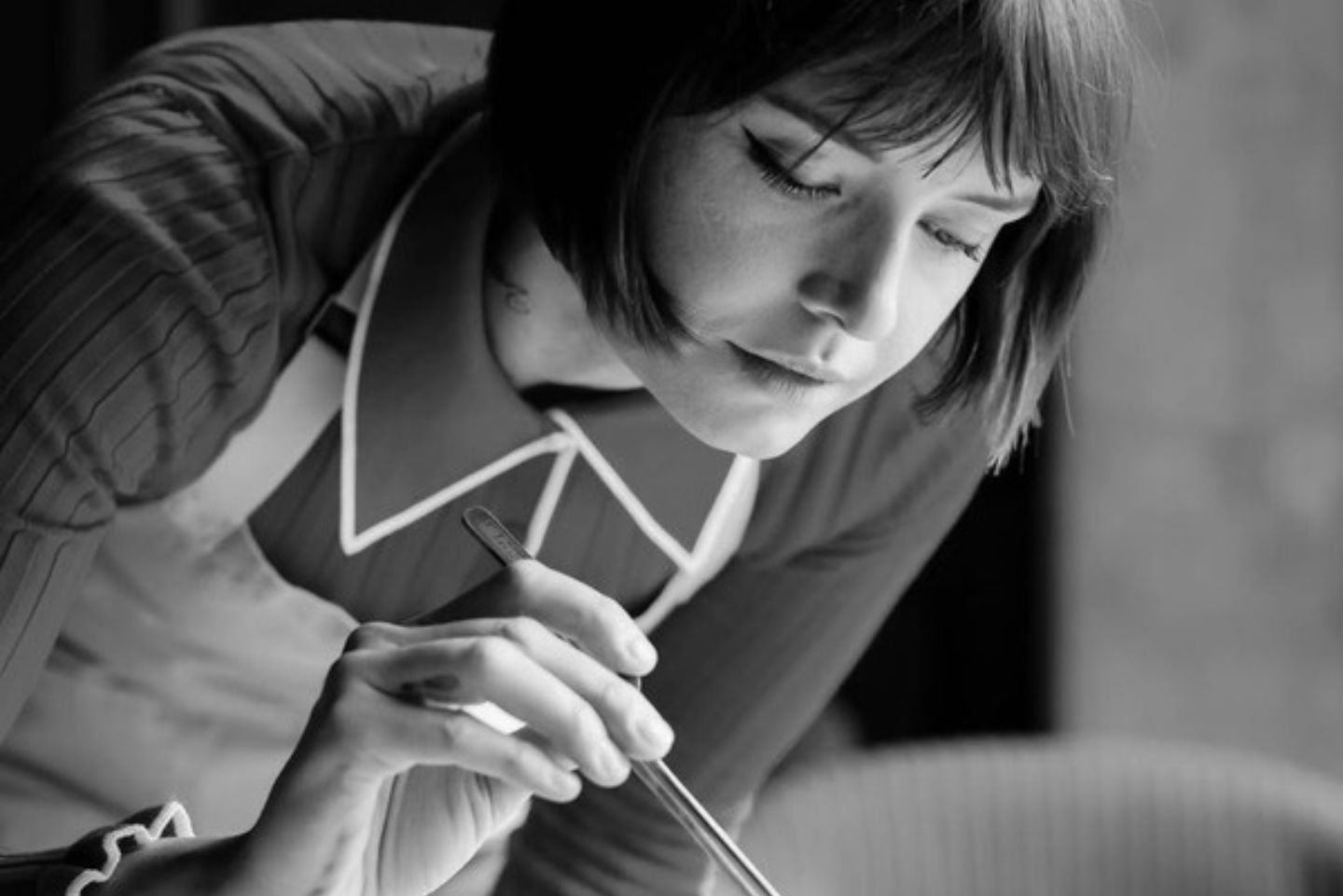
Margarita Kallas-Lee
I grew up between kitchens. My grandfather was a chef in Kyiv, and my grandmother ran a kitchen in Latvia. My great-grandmother’s Ukrainian dacha featured a vegetable garden and had berry bushes scattered throughout her property. I remember helping her harvest garlic, which she used to make her incredible tomato-and-onion salad. These meals brought us together, and that was what made them so special.
At thirteen, I began modeling. I spent years traveling and working, but what stayed constant was the quiet joy I found in pastry. I would read cookbooks in hotel rooms and bring sweets to friends at school. Eventually, I started choosing kitchens over castings. I traded runways for prep tables and never looked back.
I almost enrolled in culinary school in New York while modeling, but Phillip, now my husband, convinced me to invest not in tuition, but in kitchens. It was the best decision I could have made. I staged with people who inspired me and learned through repetition, patience, and obsession.
When we moved to Chicago, I stepped into my first real restaurant kitchen. The pastry prep room was tiny. Everyone moved with purpose. It was intimidating and felt very much like the first day of middle school. But I showed up. I kept showing up. That became a turning point in my life.
What inspires me most has never changed. When I am cooking, I am inspired. Ideas come easily to me when I am in motion. Tough times never took that from me. In fact, the more challenging moments have brought me closer to my food. I create my best work when everything else is loud and I need to return to myself in the kitchen.
One moment that marked me was the development of my sourdough. It took a year to make a version that felt promising and nine years to make one that I was pleased with. That bread tells you everything about who I am. I do not give up. Ever.
My philosophy is built on intention. Desserts should feel personal, precise, and unforgettable. Every flavor should be placed with purpose. I create dishes from scratch, refine slowly, and edit until each bite tells a clear story. Leadership works the same way. In our kitchens, communication sets the tone. I want to see people grow not only as cooks, but as humans. I guide with expectation and with care.
When we went through incredibly difficult periods, it was our team that carried us. One of my pastry cooks has been with me for ten years. That is not staff. That is family.
The night we earned two Michelin stars, one for Pasta|Bar LA and one for Sushi by Scratch Restaurants: Montecito, was surreal. I was three months pregnant. After years of sacrifice, risk, and faith in our craft, that acknowledgment felt like a deep breath. It validated our belief that excellence and humanity can coexist.
I love the craft, the teamwork, and the moments when a guest’s face says, “This is special.” We’re working to be the change we want to see. At Scratch Restaurants Group, Phillip and I offer benefits many entry-level cooks and dishwashers rarely see: health insurance, a 401(k), and paid parental leave. We prioritize the team because great hospitality starts with taking care of our people. When teams feel safe, supported, and respected, food and service quality improve, turnover decreases, and the industry becomes more sustainable. That’s the future we want to build.
We want an industry where great hospitality equals great workplaces. As Phillip and I focus on making this change in the industry, we hope it translates into all restaurant groups and industry employees, who are the driving force behind restaurant success.
Credits to @sarahblockphoto for the first 3 photos.
Secret Sauce
- What’s the most unexpected ingredient you’ve ever worked with, and how did it change your perspective on cooking?
Uni. I developed a white-chocolate bonbon with an uni ganache by freeze-drying the roe and folding the powder into the ganache. It sounds outrageous, but the result was clean, savory-sweet, and deeply aromatic; not fishy or odd. That success flipped a switch for me: if uni can sing in a dessert, then the boundaries are endless. It pushed me to treat “savory” ingredients as tools for balance, umami for depth, and salinity for lift, and to question every assumption about what belongs in pastry.
- What’s your “guilty pleasure” meal?
LAY’S® Limón Flavored Potato Chips
- A food trend that you hate and why?
I don’t hate trends. I worry they sometimes flatten creativity. Chasing an imagined “industry standard” can make plates look the same, especially when people think Michelin requires a specific style of plating. It doesn’t. Cook your point of view. Plate with intention, not imitation. Authenticity reads louder than trends.
- What’s the craziest shift you’ve ever worked in the kitchen? What happened, and how did you manage to get through it?
When we opened Pasta|Bar Austin, I was 39 weeks pregnant.
5. What happened, and how did you manage to get through it?
Mid-service, a cook asked if I was okay because my ankles were literally purple. I hadn’t noticed. I was so locked in. I sat on a milk crate for two minutes, took a breath, and then finished service. It was intense, a little crazy, and oddly beautiful. We had a tight crew, and guests were having a great night. That shift reminded me how far passion and a supportive team can carry you, and how important it is to listen to your body too.
- What tips would you give to other cooks and chefs to help them navigate their culinary careers and find peace amid the chaos of the kitchen?
Discipline is everything. Show up ready to grow because it keeps you sharp, focused, and evolving. Lead well. Your communication sets the tone, so build a supportive, inspiring, respectful kitchen. You also should take notes because you won’t remember every detail, and today’s notes become tomorrow’s systems. Ask why. Curiosity accelerates mastery, deepening your understanding of techniques, flavors, and processes. And protect your mindset. Energy is contagious, so a steady, positive attitude can calm chaos and lift the whole team, especially on tough days.
- What’s an underrated ingredient and why?
Oxtail, I rarely see it on menus. It is not only good for you, but there is so much you can do with it.
8. What’s a must-try dish from your kitchen or the one you’re proudest to have prepared?
My sourdough. It’s one of the first things on the menu at Pasta|Bar in Austin and Los Angeles. We serve it with my housemade cultured butter and high-grade olive oil. The sourdough starter is 59 years old, and I’ve nurtured it since we opened our first restaurant 13 years ago. I take pride in my sourdough, which I feel I’ve finally perfected after nine years of tinkering. It’s personal, and it sets the tone for the whole experience.
About Your City!
Austin
- If Anthony Bourdain or a chef came to your city, what would be the perfect tour itinerary from breakfast to dinner?
Have pastries at Abbey Jane in Dripping Springs. Have lunch at Sushi YUME. Pizza as a little snack before dinner at All Day. For dinner, go to Roccos, followed by after-dinner drinks at Strangelove.
Cooking for a Nation
Humans Of The Kitchen
His dream is to represent Azerbaijan to the world without losing himself.
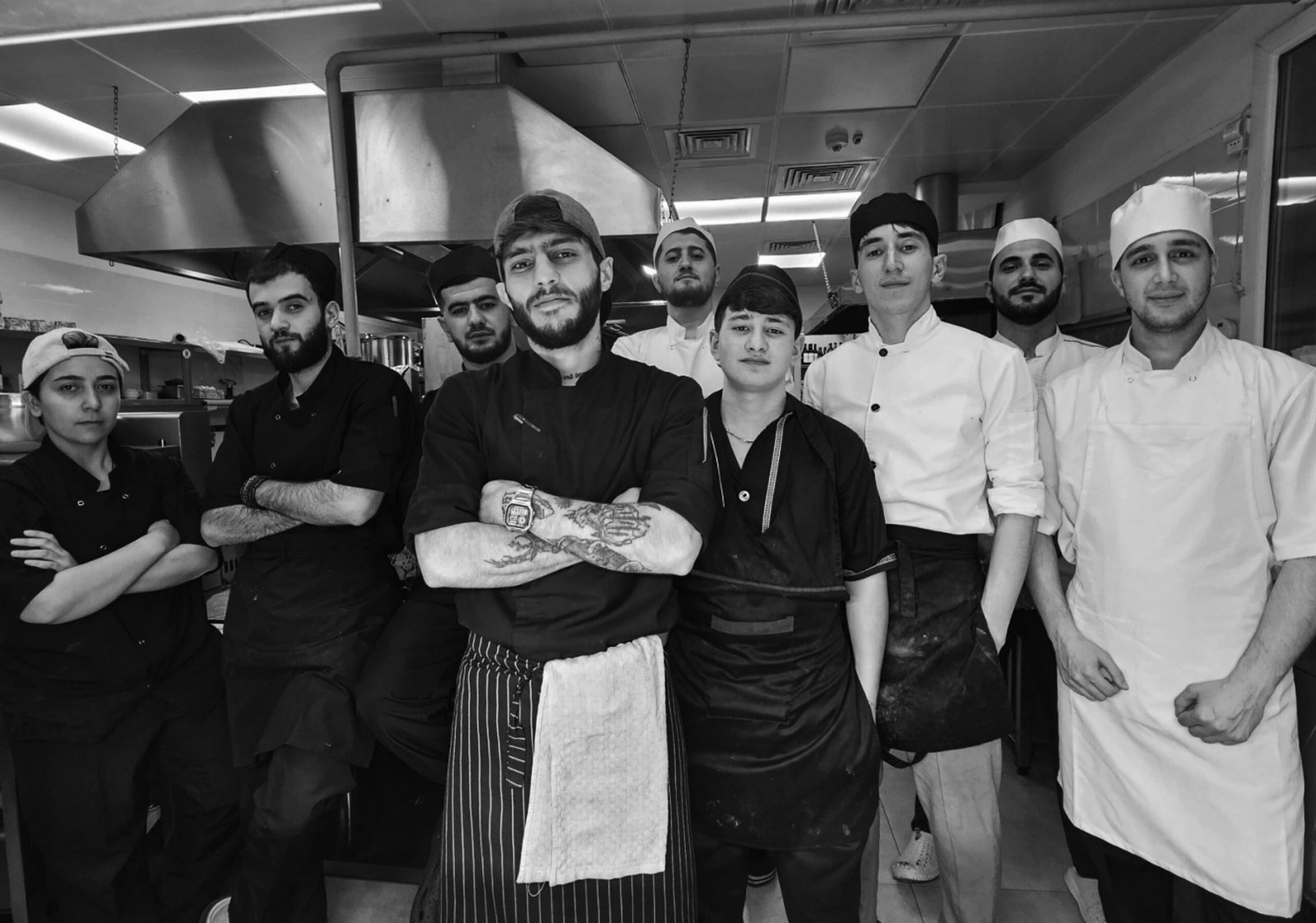
Mammad Mammadov
Mammad Mammadov
I believe cooking chooses you. For me, the fire began quietly, not from one single moment, but from the feeling that I was meant to create something meaningful. The kitchen became the place where I could express who I am without speaking. When things get hard, I remind myself why I started in the first place: I want to become one of the best chefs from Azerbaijan. Passion, focus, and patience have guided me every step of the way.
When I look back at my childhood, I realize my love for cooking began in my grandmother’s kitchen. She prepared every meal with love, filling the house with delicious aromas that made everyone gather around. I used to watch her hands while she kneaded dough, completely fascinated by her calmness and precision. That’s when I understood that food isn’t just for eating, it nourishes the soul too. The warmth, the smells, and the peace of those moments still inspire me today.
Before becoming a chef, I worked in a few different jobs that had nothing to do with cooking. They taught me discipline and responsibility, but they never gave me the same sense of purpose I felt in the kitchen. That contrast helped me see clearly: Cooking wasn’t just my job, it was my voice, the way I express who I am.
I didn’t go to culinary school. Everything I know came from experience, hard work, and curiosity. I learned by doing, by watching other chefs, experimenting, and repeating. That made me creative and adaptable. I don’t just follow recipes; I trust my instincts and cook with emotion. Every dish I make carries a part of my story.
The first time I stepped into a real restaurant kitchen, I’ll never forget it. The heat, the speed, the sound of knives and voices calling orders — it was chaos, but to me, it felt like music. I was nervous but excited, because I knew I had found where I belonged. That day taught me that the kitchen is built on passion, teamwork, and discipline. A place where you earn respect through effort.
In the beginning, my biggest challenges were the pressure, long hours, and constant demand for perfection. I burned dishes, made mistakes, and sometimes felt like giving up. But each failure became a lesson. I learned to breathe, to stay calm, and to listen. Over time, I built confidence and transformed frustration into motivation. Those early years taught me patience, focus, and resilience, the true ingredients of success.
My older brother was the one who opened the door to this world for me. He showed me the discipline behind the craft and the importance of humility. His guidance taught me to never stop learning and to respect every part of the process, from peeling an onion to plating a dish.
There was also a time in my life when I was struggling mentally and emotionally. The kitchen became my therapy. It gave me structure when everything else felt uncertain. Cooking allowed me to turn chaos into creation. Sharing food with my team and guests reminded me that I wasn’t alone. That sense of connection healed me in ways words never could. Cooking saved me, it gave me purpose again.
One moment that marked me forever was when my mentor tasted a dish I had created myself. He smiled and said, “Now you’re cooking from the heart.” That simple sentence changed everything. It made me realize that being a chef is not just about technique, it’s about emotion, passion, and soul. From that day, I stopped trying to impress and started to truly express.
Over the years, I grew from a kitchen helper to a cook, and eventually to a chef who leads others. For me, being a chef is not only about cooking well, it’s about guiding, teaching, and inspiring. In my kitchen, unity and communication are everything. When one person rises, we all rise.
My philosophy is simple: cook with heart, lead with respect, and never stop learning. Every ingredient has a story, and every dish deserves intention. Leadership, to me, means building an environment where people grow together. Food should reflect honesty and balance, just like life.
One of the proudest moments of my career was becoming the head chef of a professional kitchen. Standing there, watching my team move in perfect rhythm, I realized how far I had come, from a dishwasher to a leader. Another milestone that meant everything to me was hearing people say they could “feel” my personality in my food. That’s the kind of recognition that matters most, not fame, but connection.
What I love most about restaurant culture is the rhythm: The teamwork, creativity, and energy that flows during service. But what frustrates me is how often balance and respect are missing. Too many chefs burn out because of stress or toxic leadership. I want to be part of a change, to build kitchens where passion and respect coexist. A good kitchen, in my view, is one where people grow, not just survive. The future of this industry must be built on empathy, teamwork, and mental strength, as much as skill and flavor.
My hope for the future of food is that it becomes more sustainable, honest, and human. I want chefs to focus more on real flavor, local ingredients, and health, not just trends. Through my projects, like Greenlife and Paradise Chocolate, I promote clean, high-quality food made with care. I want to inspire others to cook with purpose and heart, to create food that nourishes both body and soul.
There’s one thing about my story that people often miss: I didn’t just become a chef; I fought for it. I’ve been through war, pain, and rebuilding myself from zero. Cooking gave me peace when nothing else did. Every meal I create carries that strength, a reminder that love, discipline, and fire can turn any struggle into something beautiful.
Secret Sauce
- What’s the most unexpected ingredient you’ve ever worked with, and how did it change your perspective on cooking?
The most unexpected ingredient I’ve ever worked with was fermented garlic honey. At first, I wasn’t sure how it would fit in my dishes, but it completely changed how I think about balance: Sweet, sour, umami, all in one bite. It taught me that real creativity comes when you stop fearing mistakes.
- What’s your “guilty pleasure” meal?
My guilty pleasure? Honestly, a simple homemade burger with crispy fries at 2 a.m. after a long shift. No fancy plating, just real flavor. Sometimes, the simplest food gives the most comfort.
- A food trend that you hate and why?
One food trend I can’t stand is over-decorated “Instagram food”. Dishes that look perfect but have no soul. Food should be about taste and emotion, not just likes and filters. I believe a real chef cooks for people, not for photos.
- What’s the craziest shift you’ve ever worked in the kitchen? What happened, and how did you manage to get through it?
The craziest shift I ever had was during a full restaurant service when two cooks didn’t show up. I had to manage the line, the grill, and the pass, all at once. Plates flying, orders piling up, chaos. But I stayed focused, stayed calm, and turned that fire into rhythm. By the end, I was exhausted but proud. That night taught me that pressure doesn’t break you, it shapes you.
5. What tips would you give to other cooks and chefs to help them navigate their culinary careers and find peace amid the chaos of the kitchen?
My advice to other chefs: stay hungry, but stay human. Respect the kitchen, respect your team, and never let ego be louder than passion. Learn every day, take care of your body and mind, and remember: Cooking isn’t about perfection, it’s about connection. The fire in the kitchen can burn you or light your way. It depends on how you use it.
6. What’s an underrated ingredient and why?
One lesser-known ingredient I truly respect is sumac. It’s common in Middle Eastern cuisine but still underrated globally. Its tangy, citrus-like flavor brings life to any dish — meat, salad, even sauces. For me, sumac represents balance; a reminder that even a small touch can completely transform the taste and energy of food.
- What’s a must-try dish from your kitchen or the one you’re proudest to have prepared?
The dish I’m most proud of is my herb-marinated grilled chicken with roasted vegetables and garlic-yogurt sauce. It’s simple but full of depth — healthy, flavorful, and true to who I am. I’ve served it to hundreds of people, and each time, I feel proud because it represents my philosophy: clean food, strong flavor, honest cooking.
About Your City!
Azerbaijan, Baku
- If Anthony Bourdain or a chef came to your city, what would be the perfect tour itinerary from breakfast to dinner?
If Anthony Bourdain came to my city, Baku, I’d start his morning at a local tea house with fresh qutab and black tea. Then we’d visit the old city (İçərişəhər), try dovğa and dolma, and walk through the seaside boulevard. For lunch, I’d take him to a small spot near the market for freshly grilled lamb kebab and tandır bread. In the evening, we’d stop by a wine bar for local cheese and seafood from the Caspian. He’d end the night watching the lights of Flame Towers with a cup of Azerbaijani tea — full stomach, full heart.
